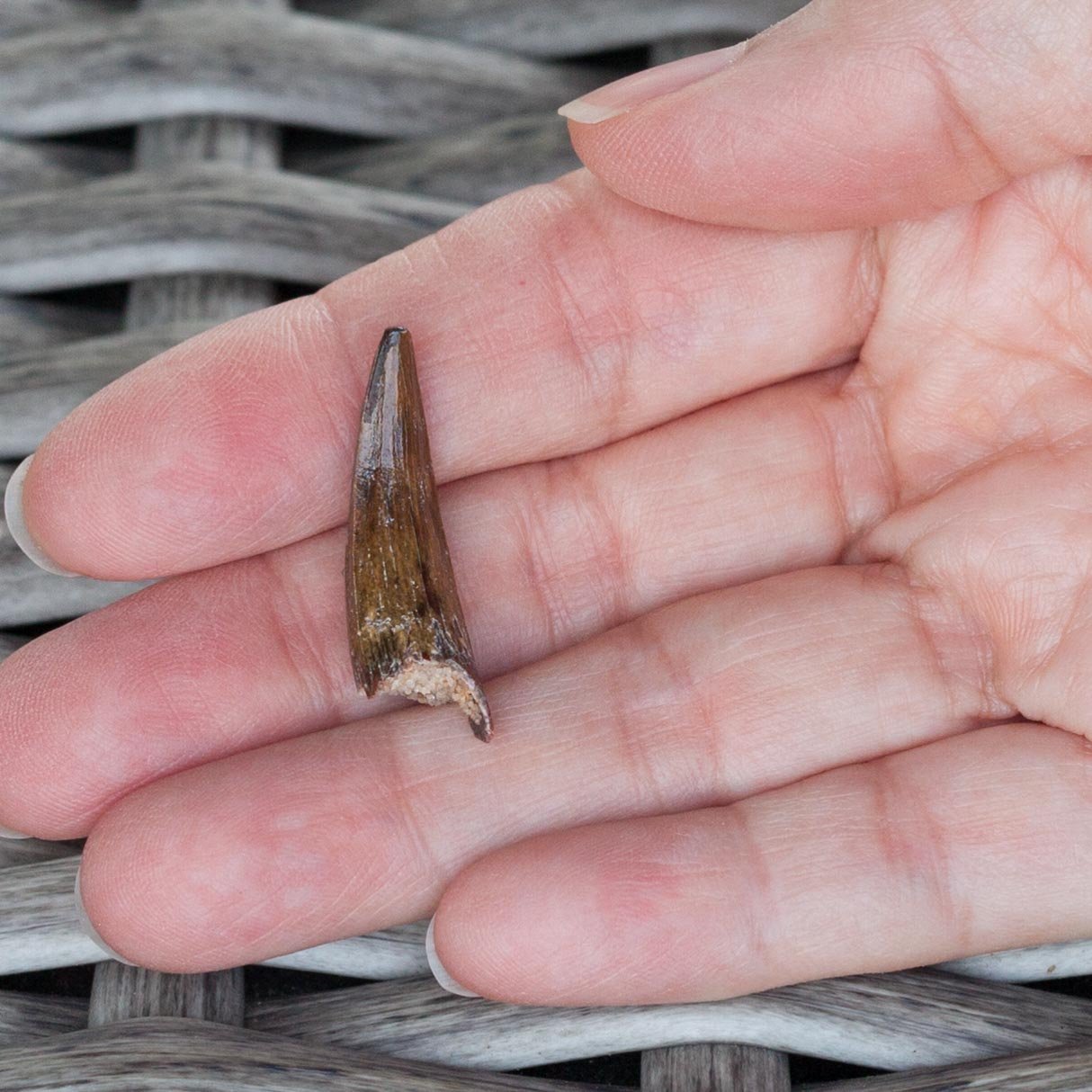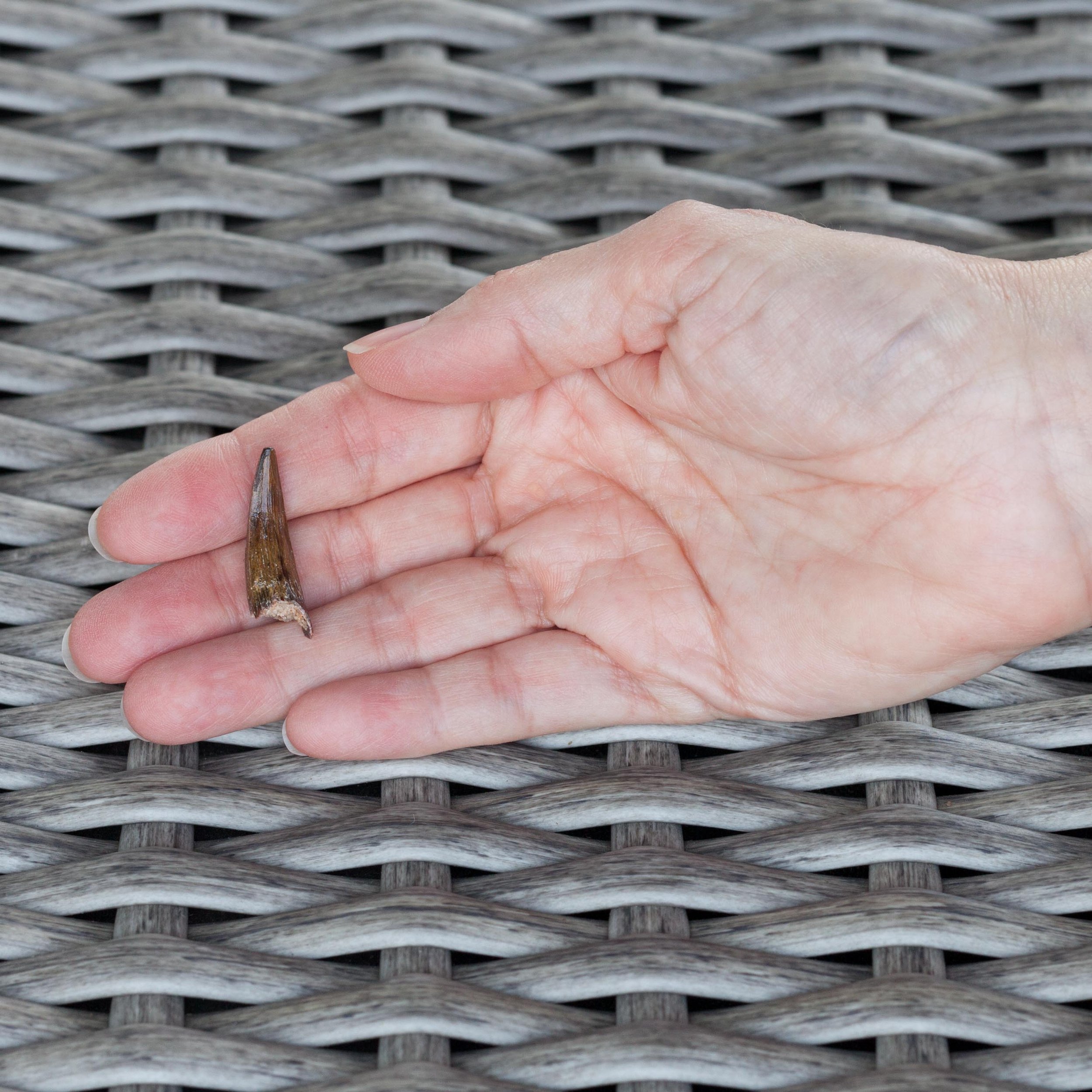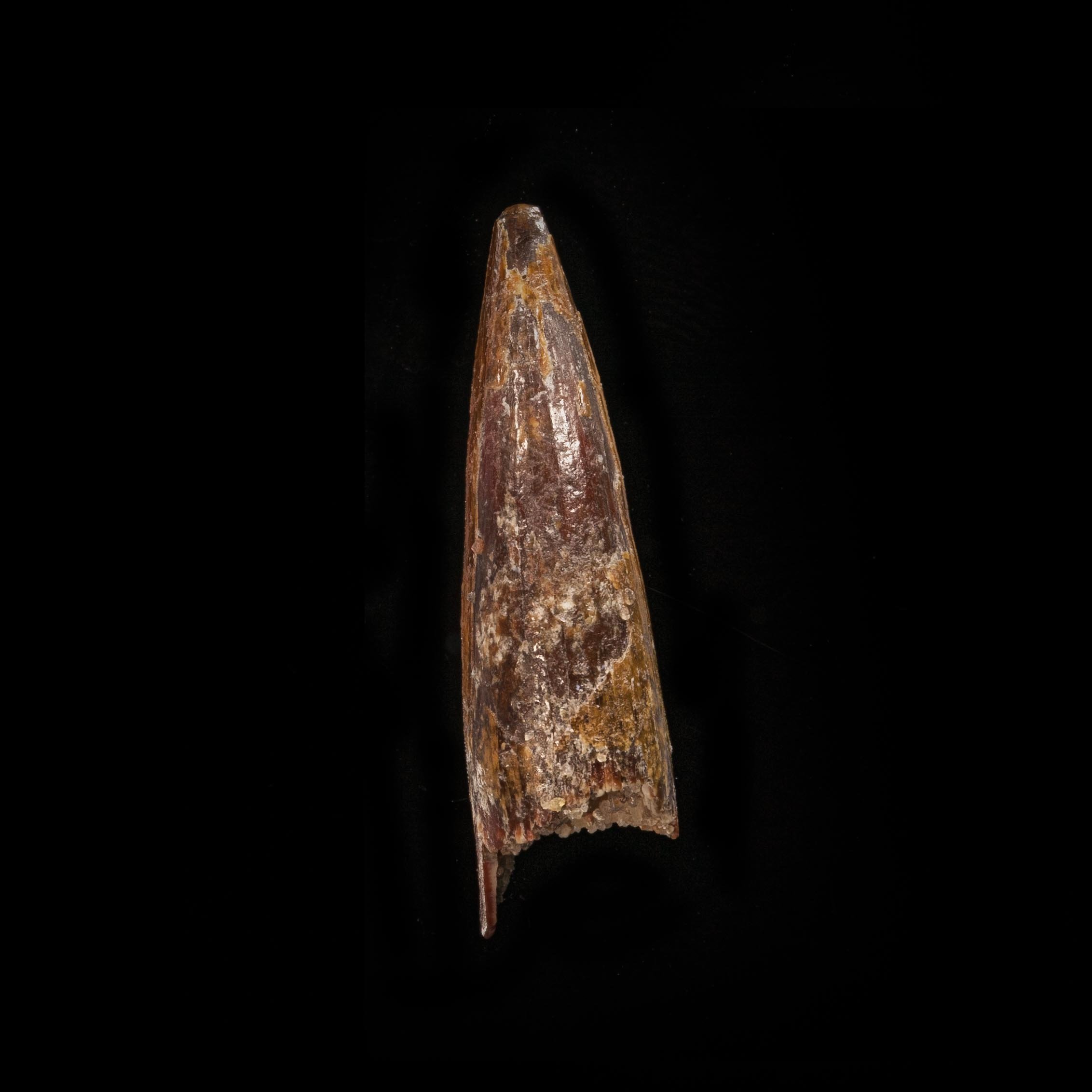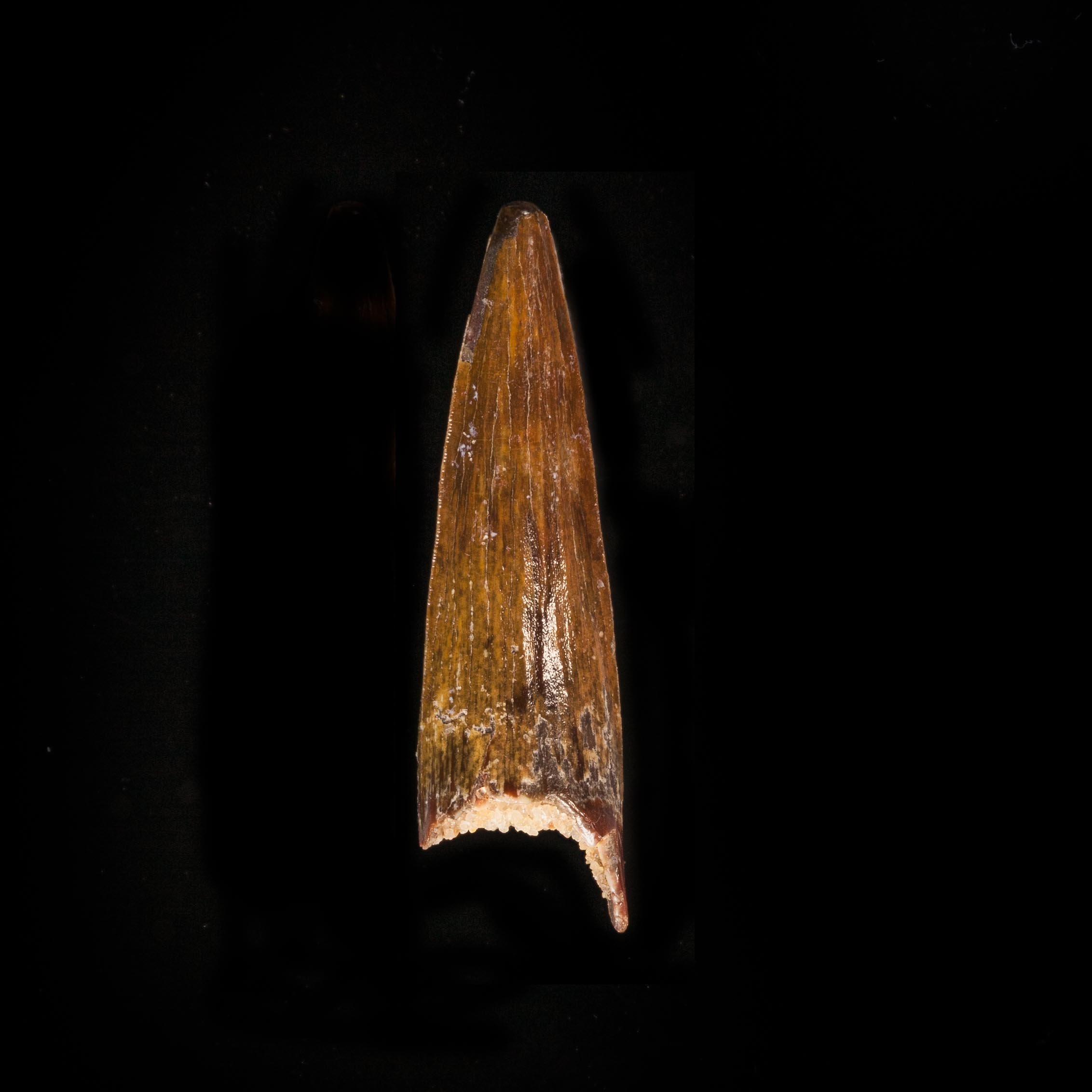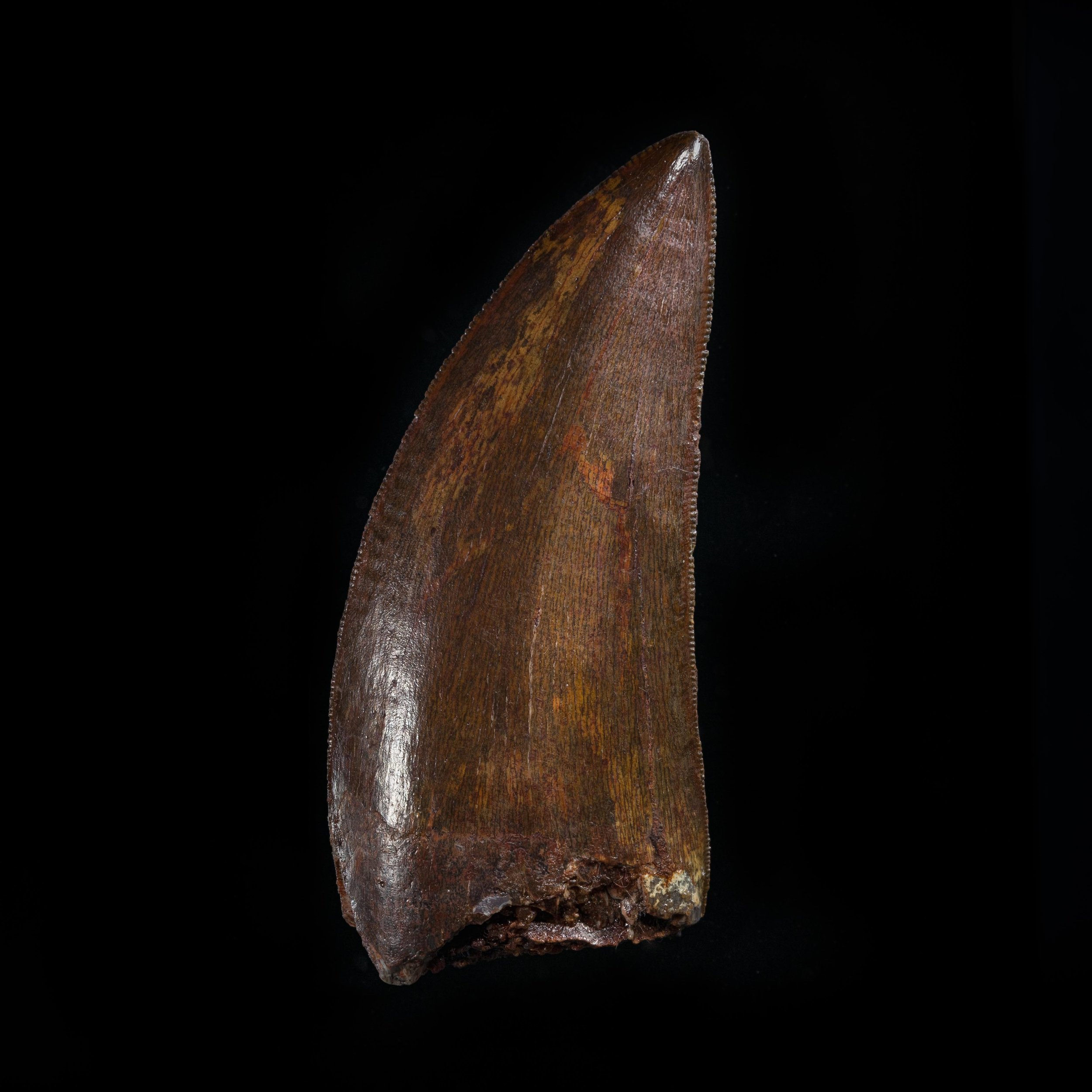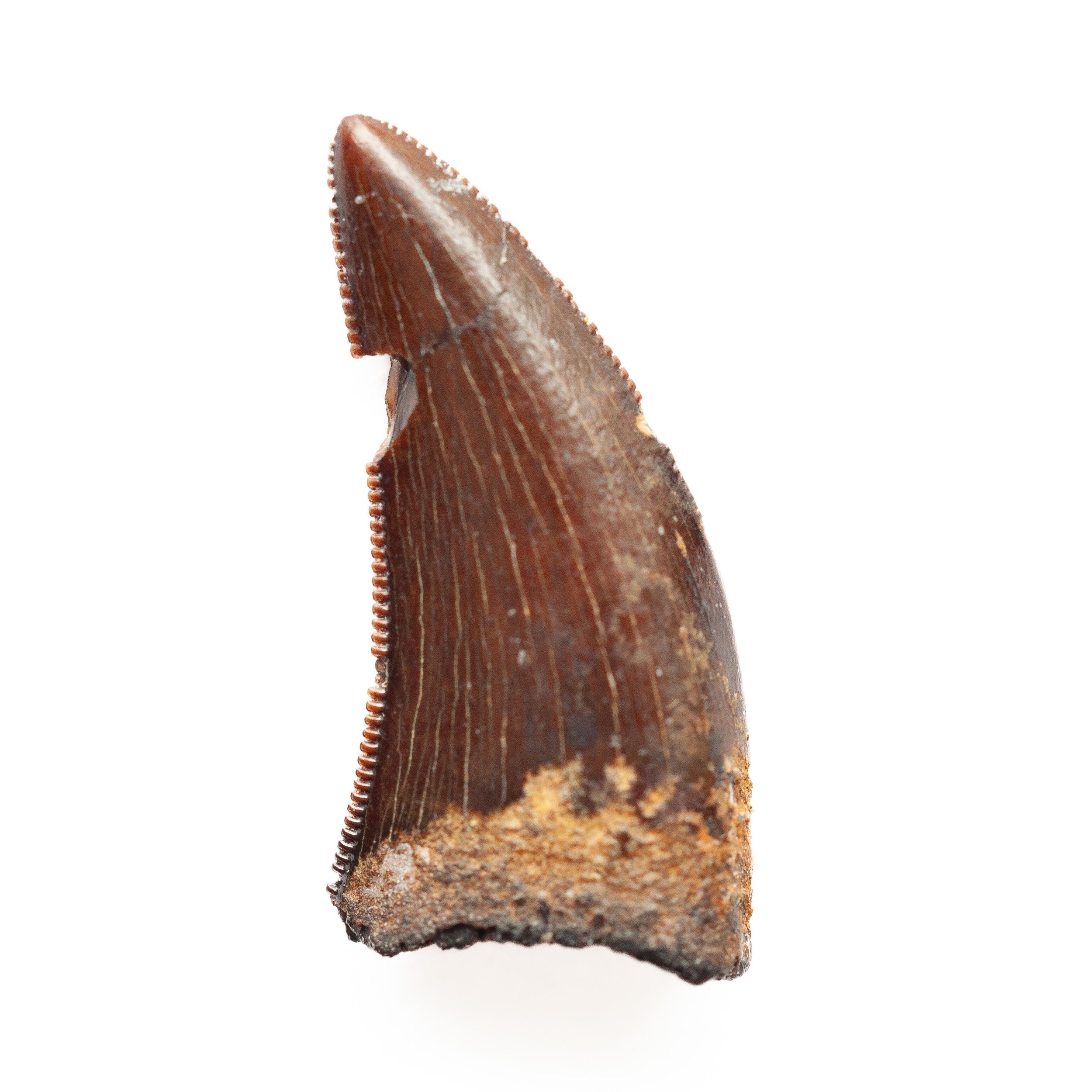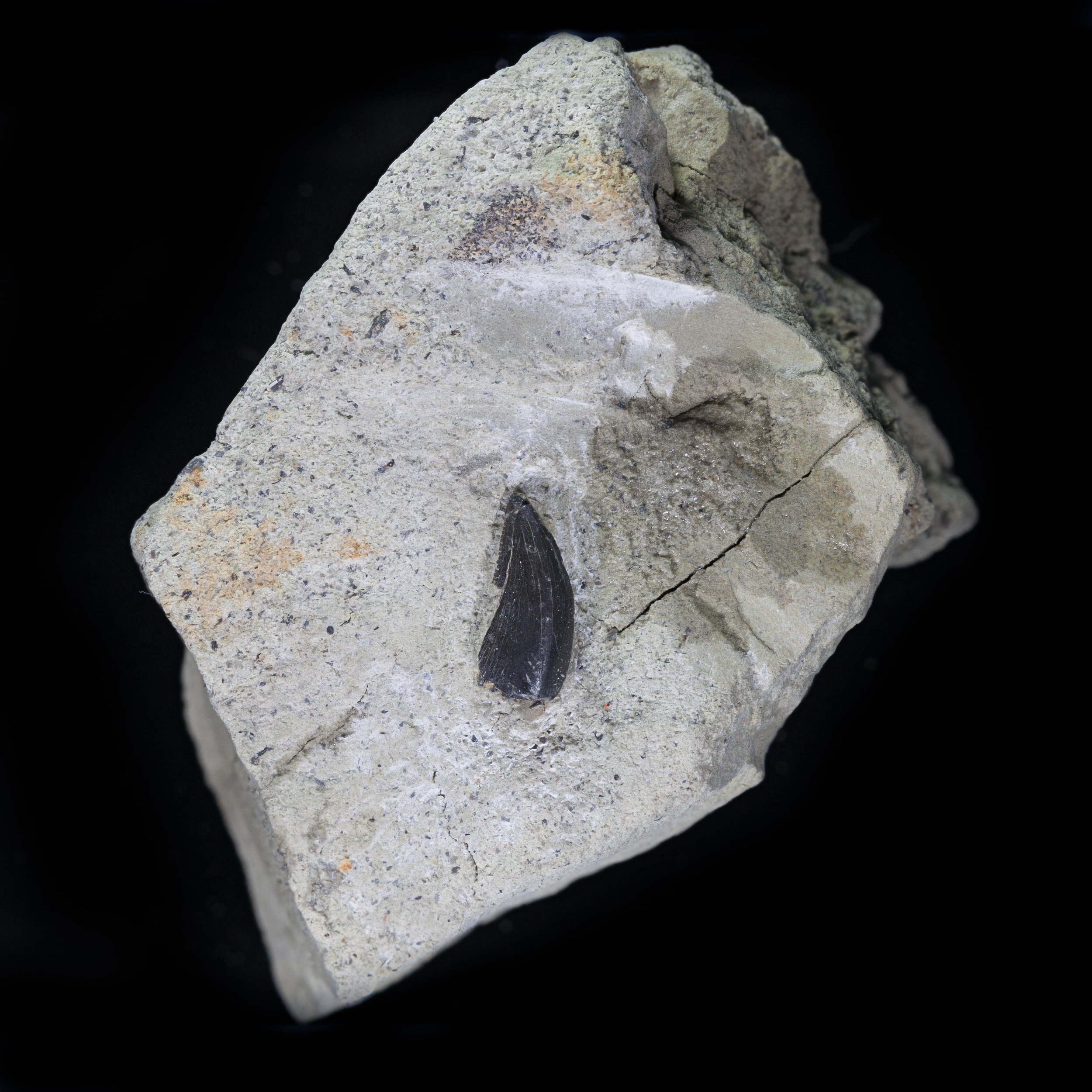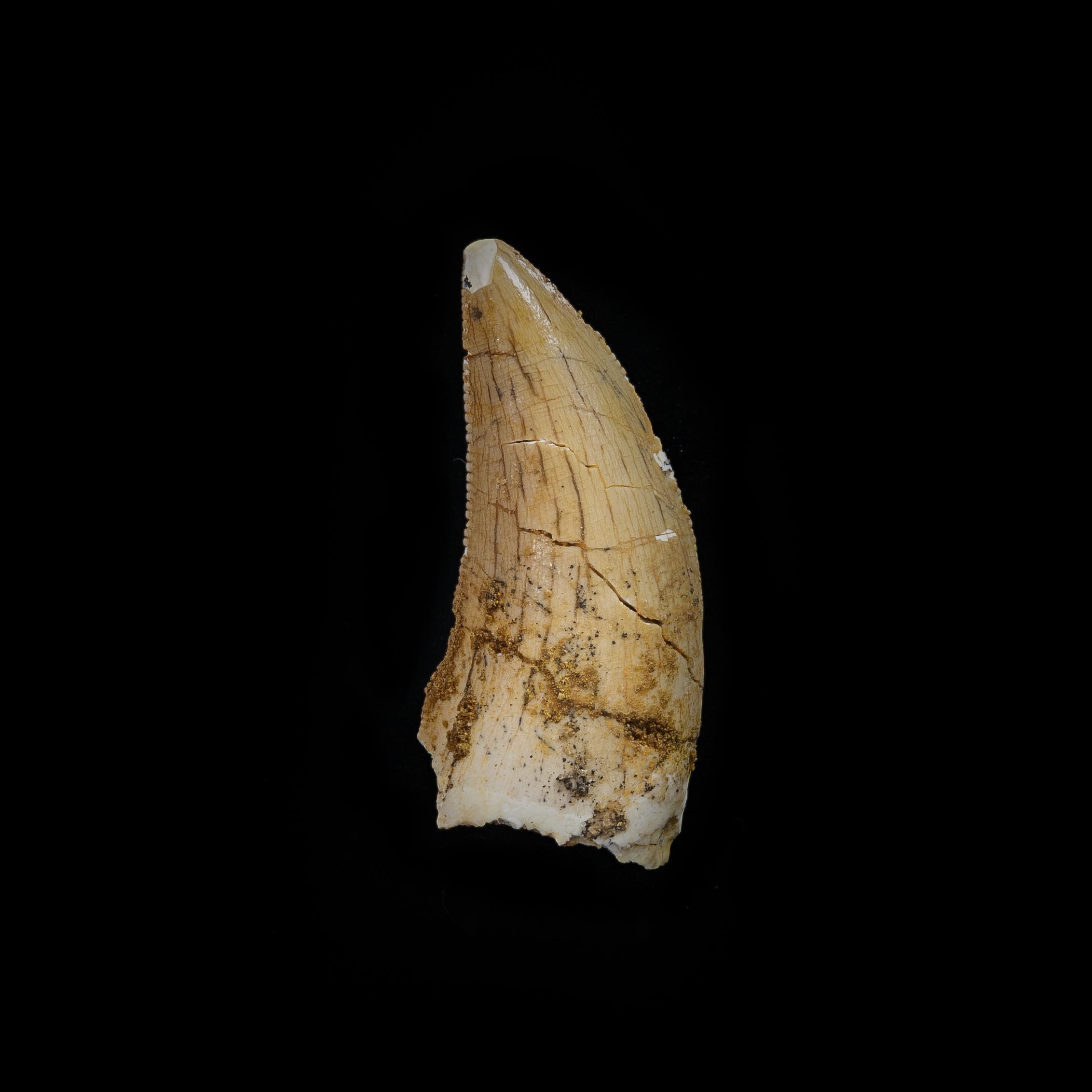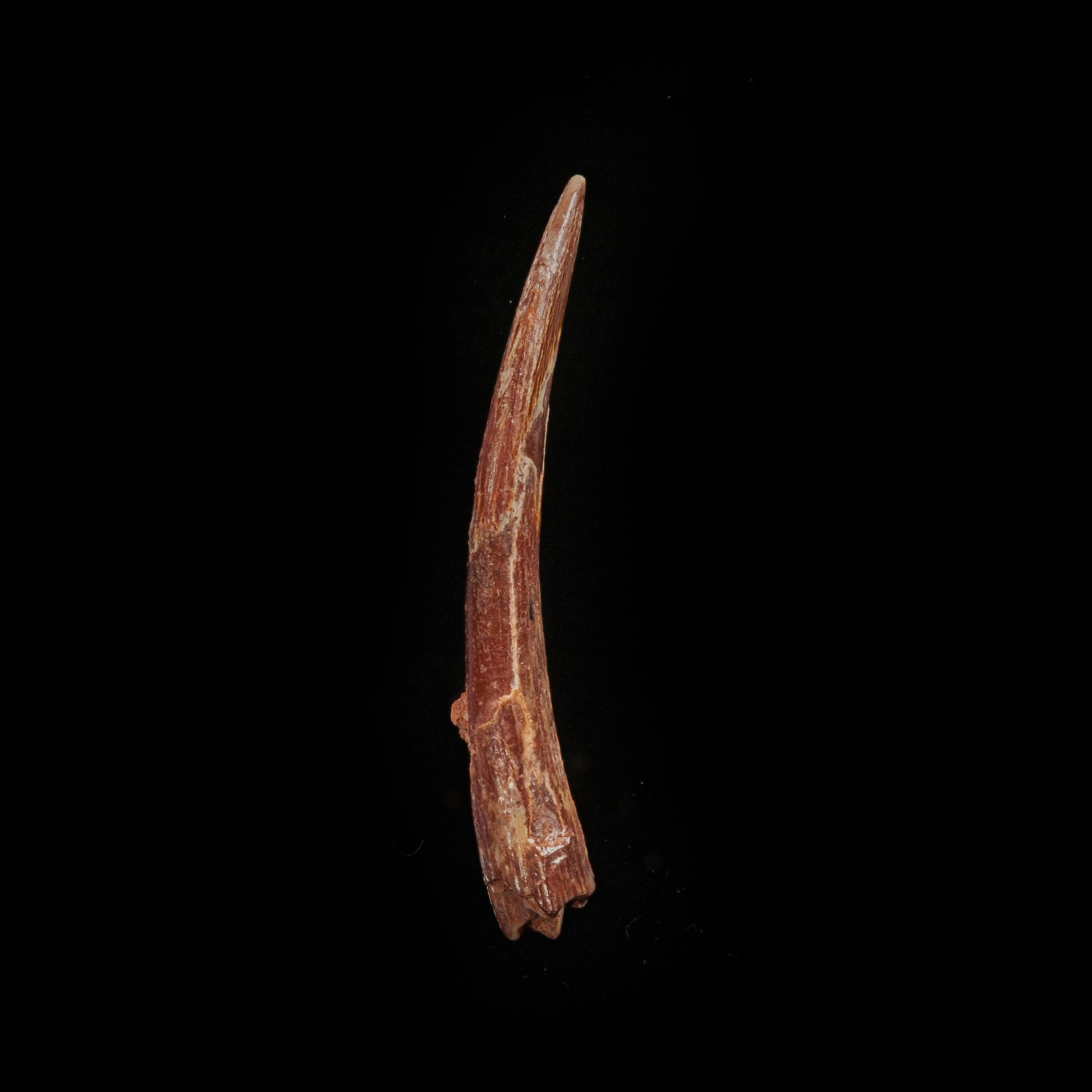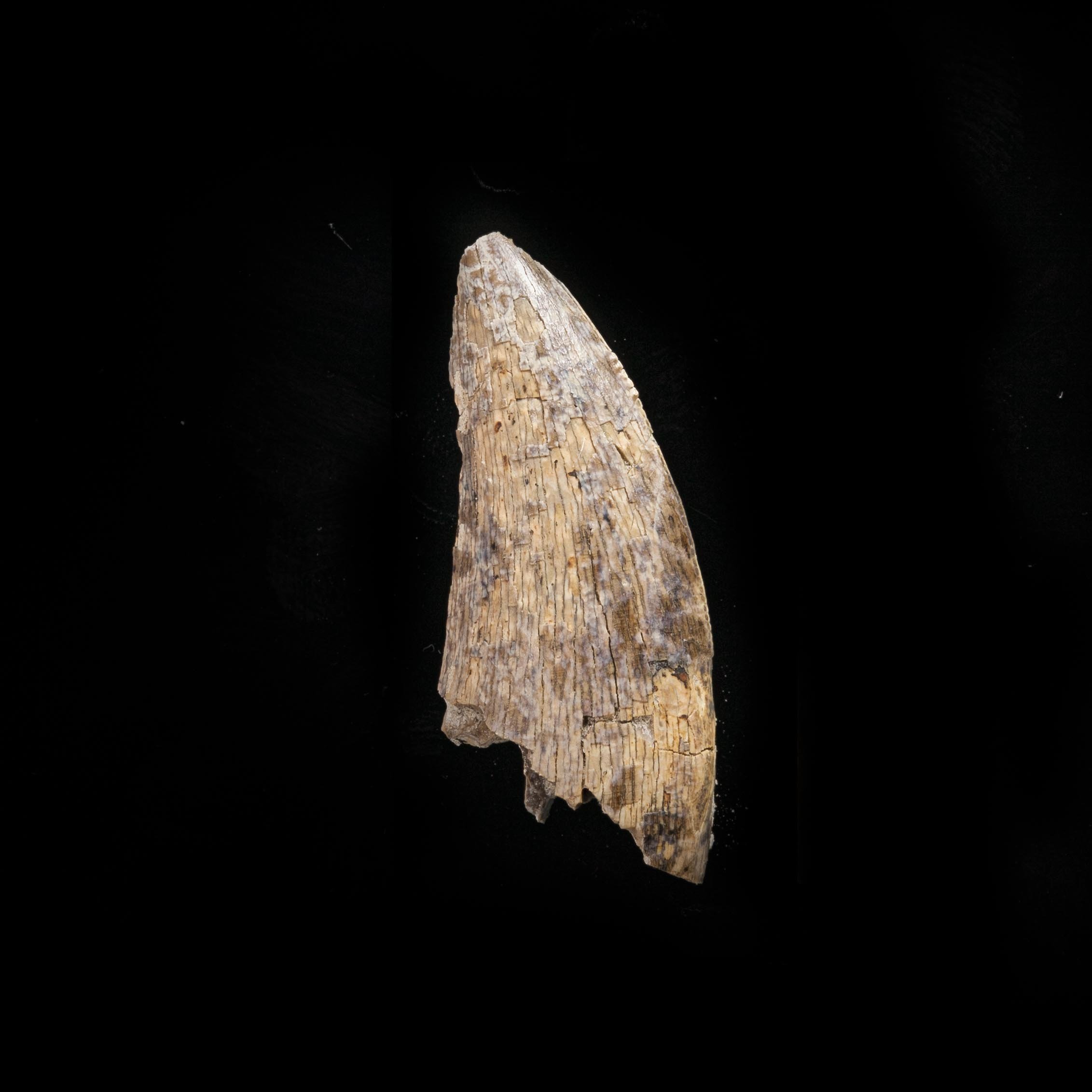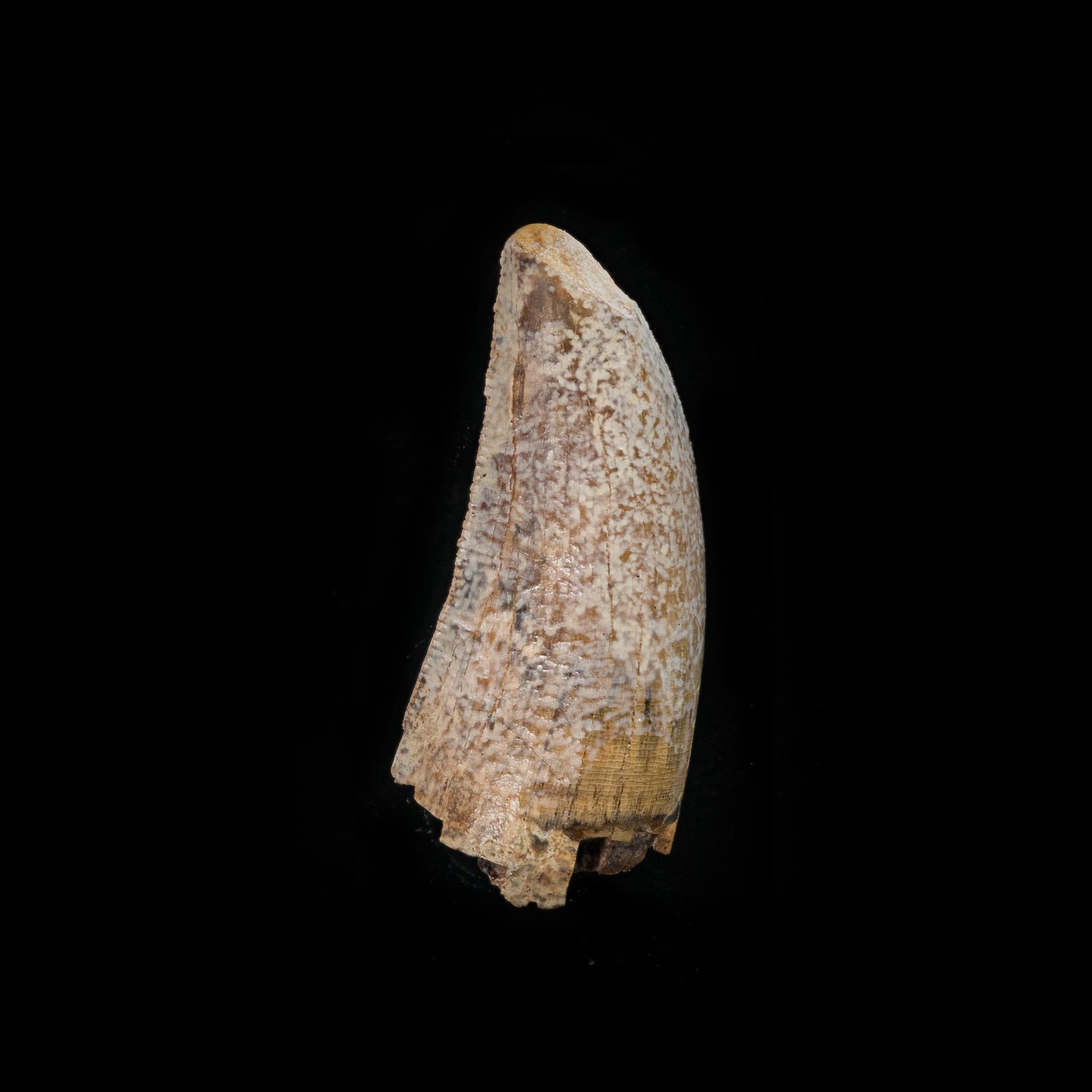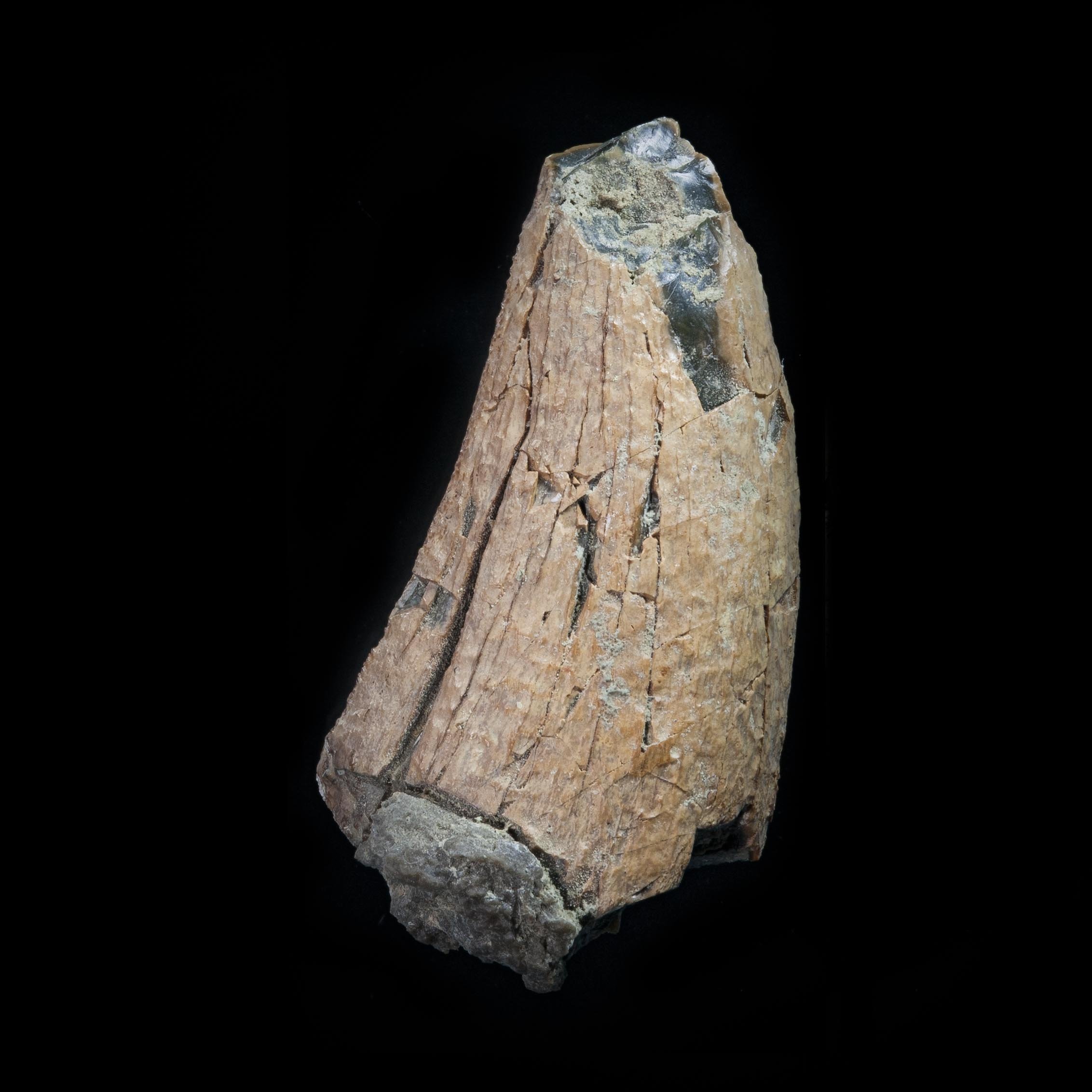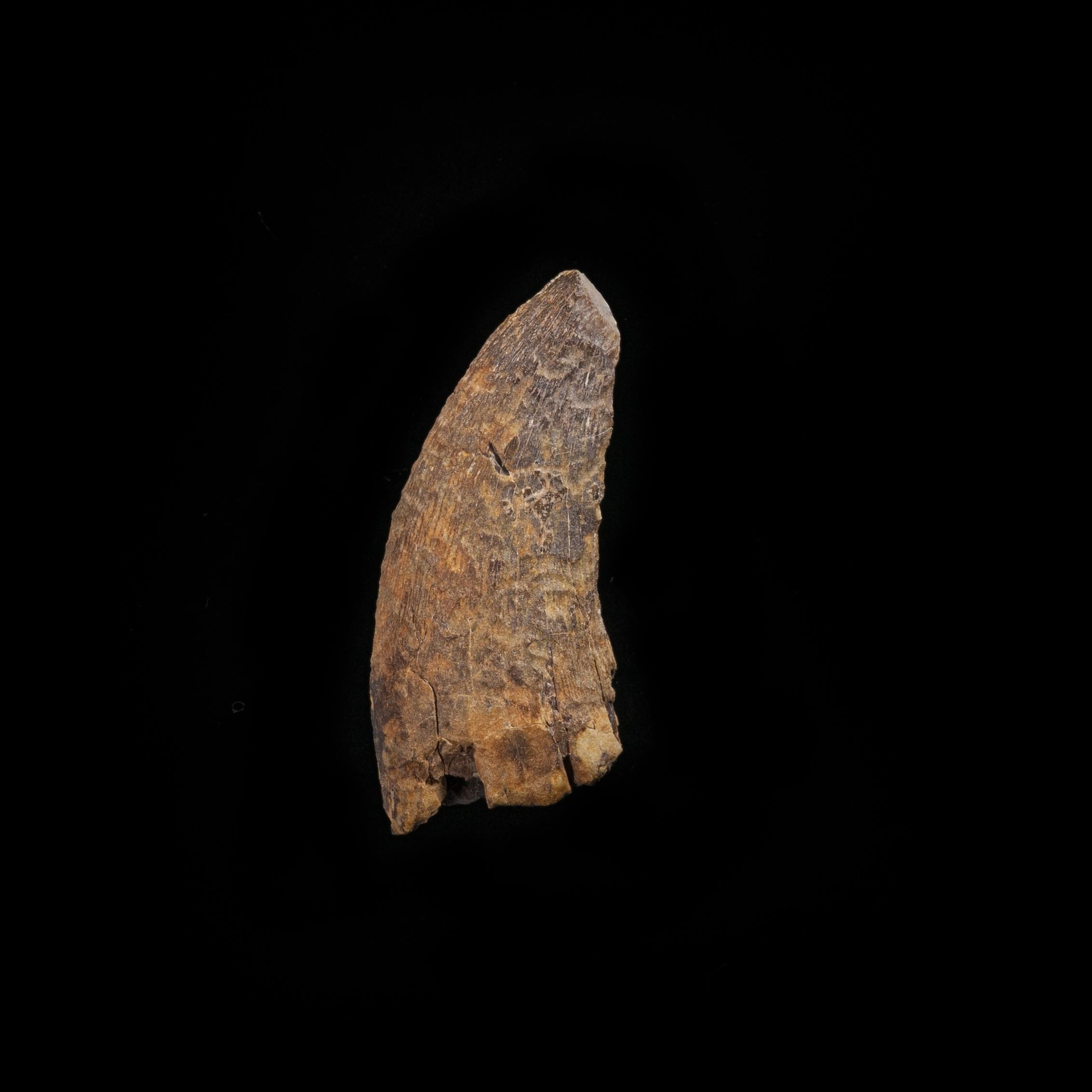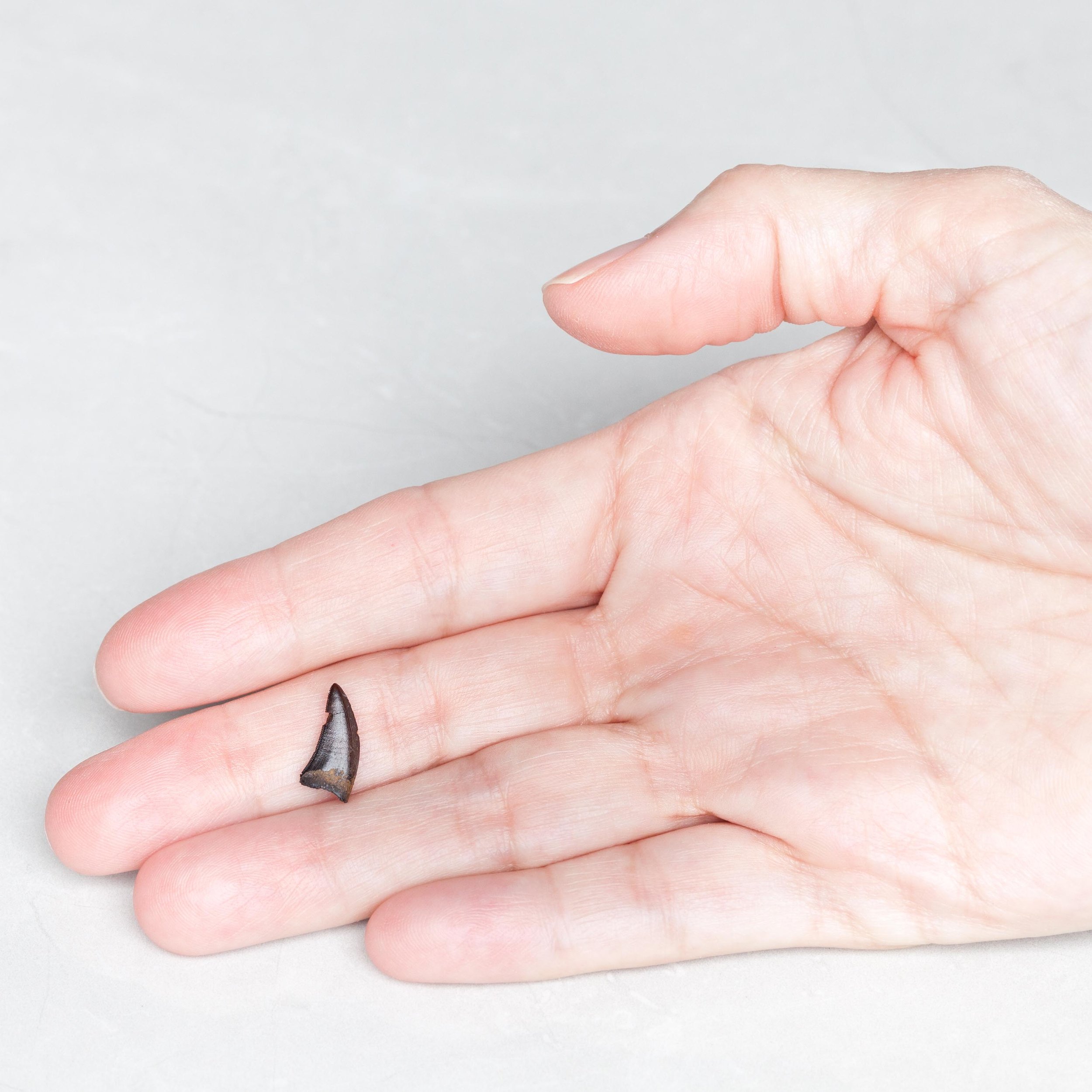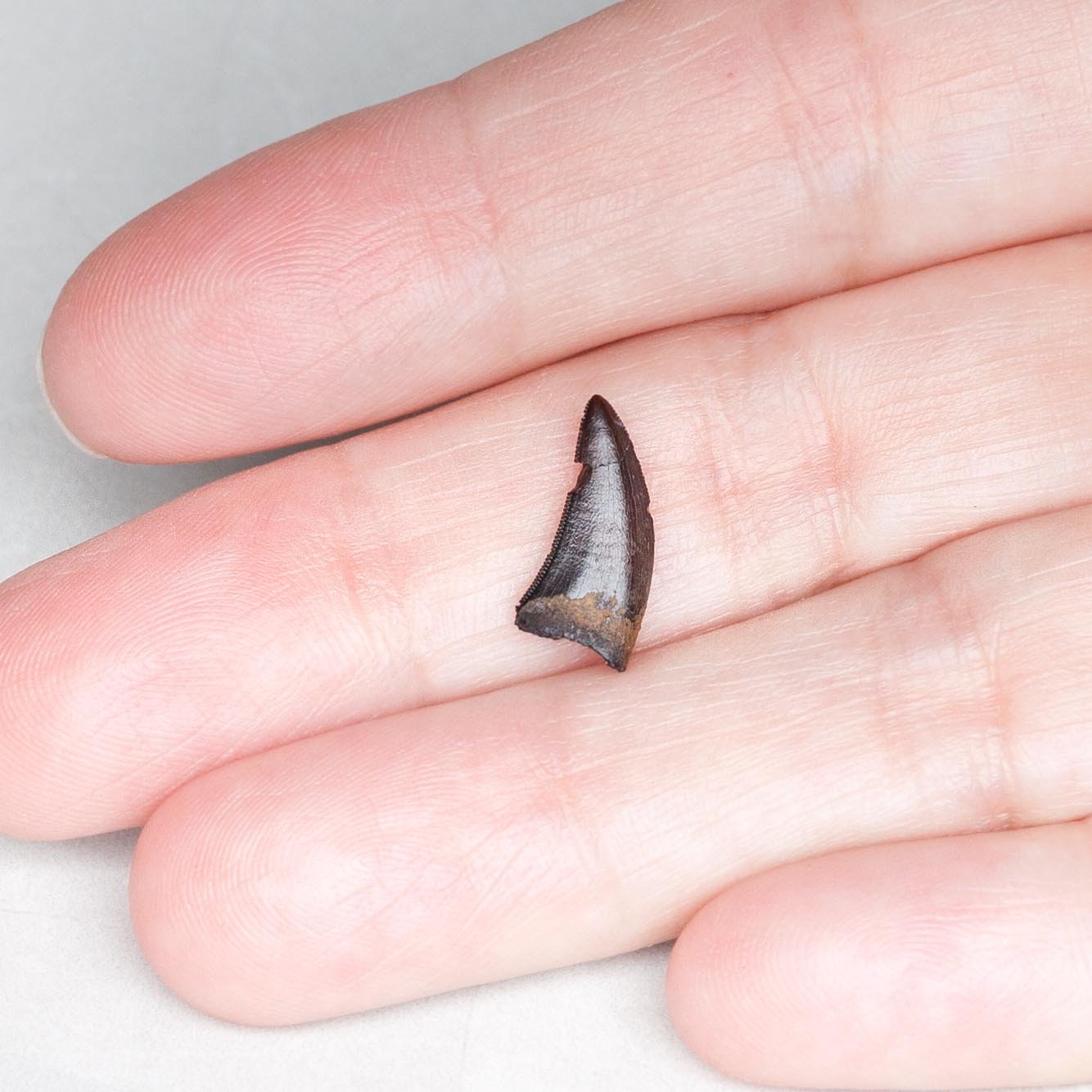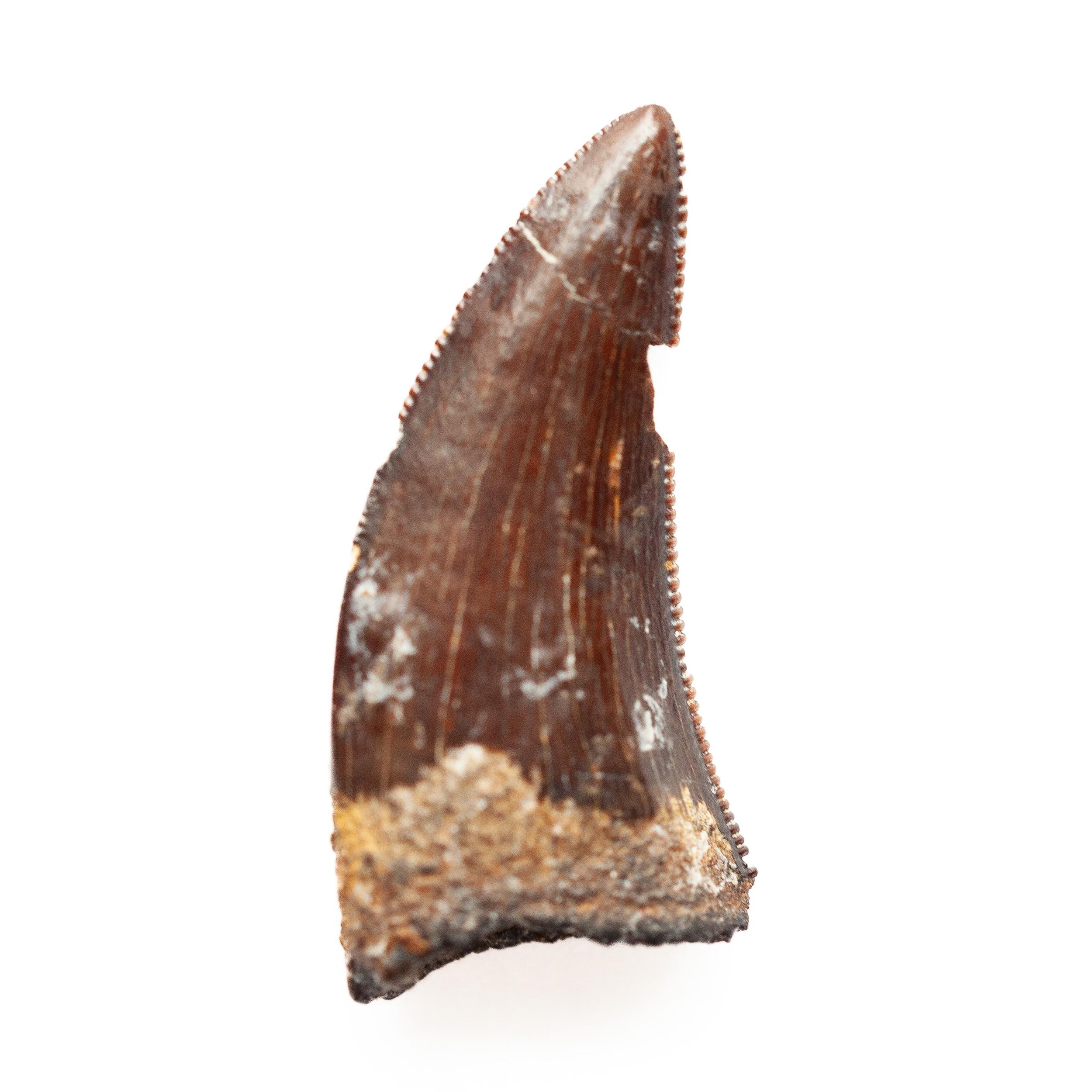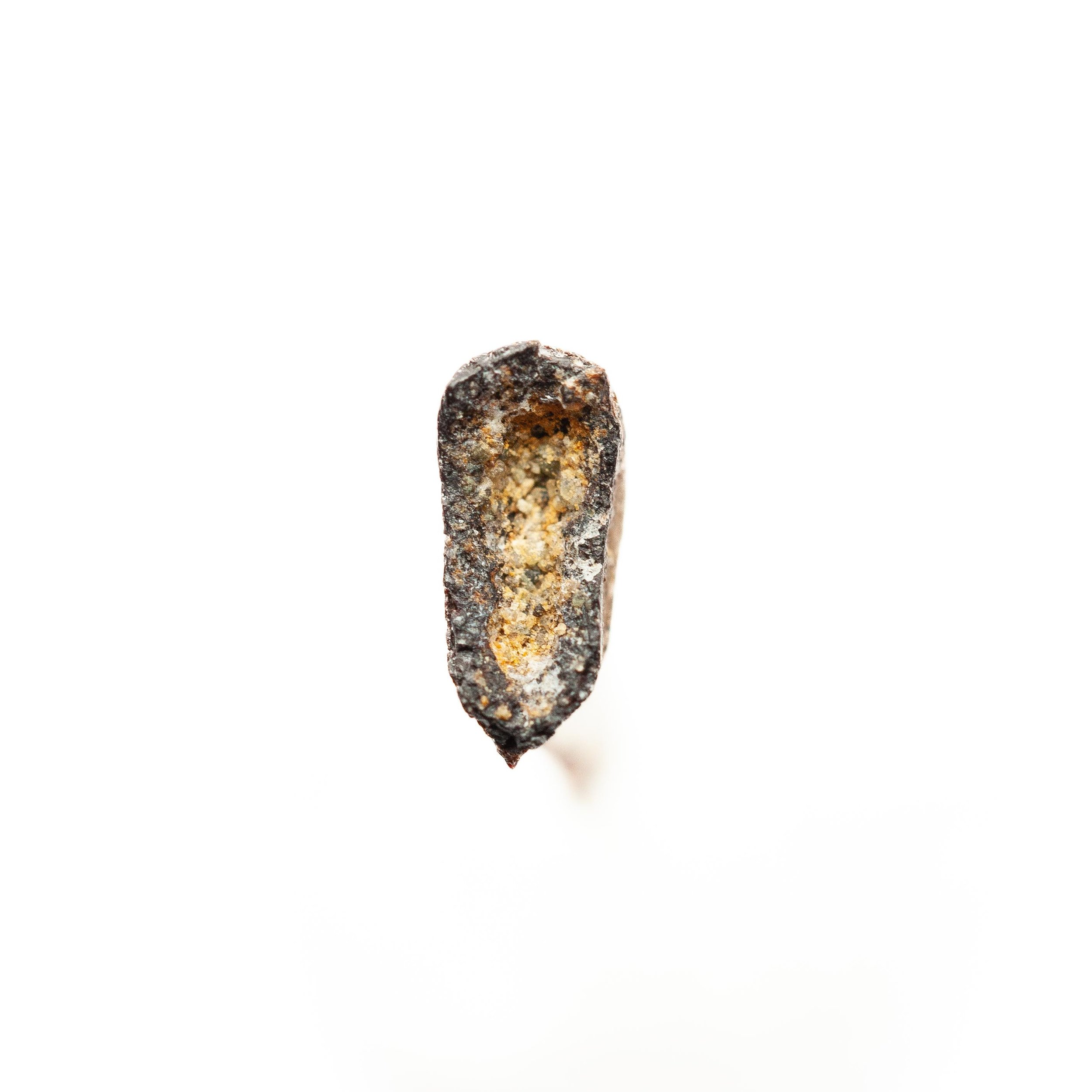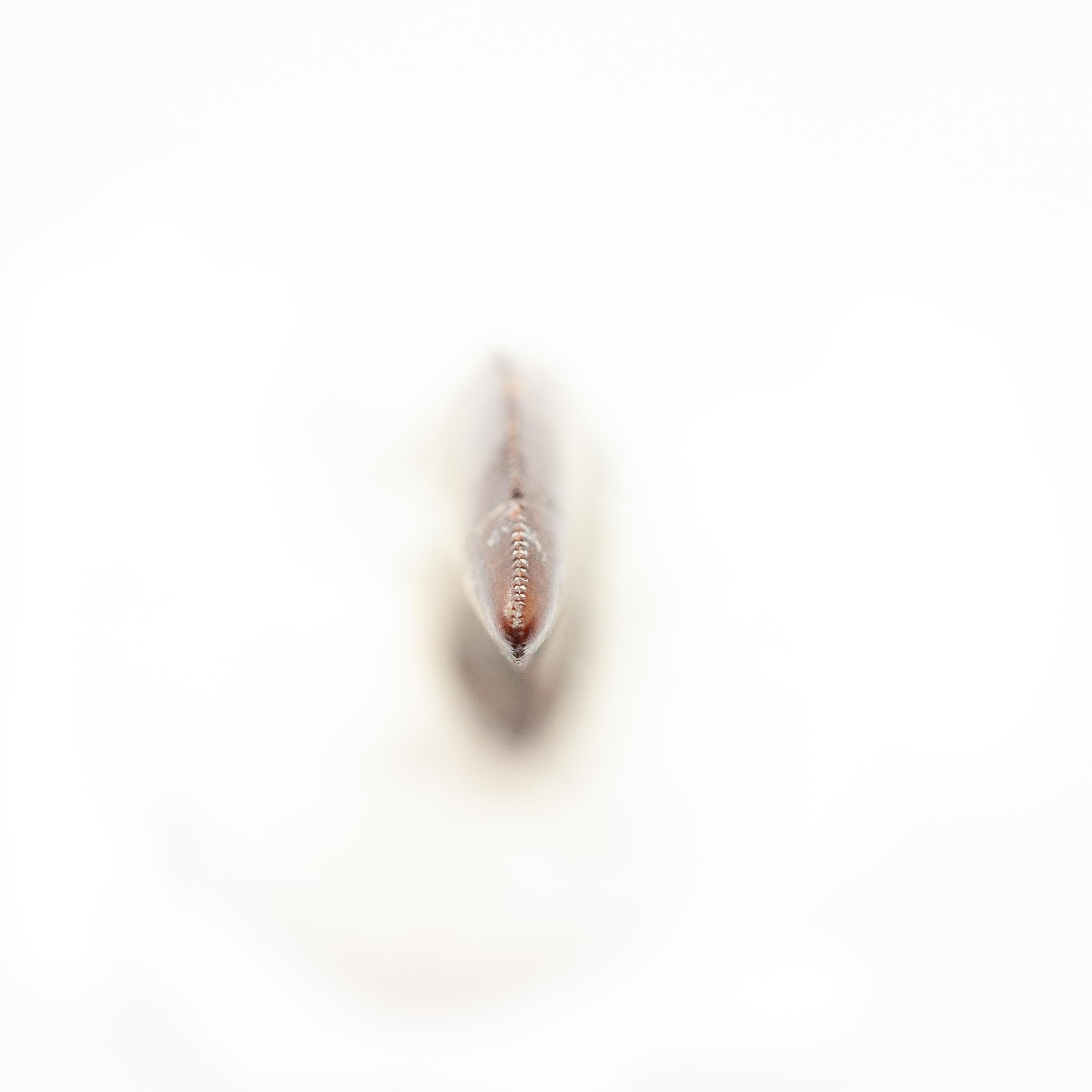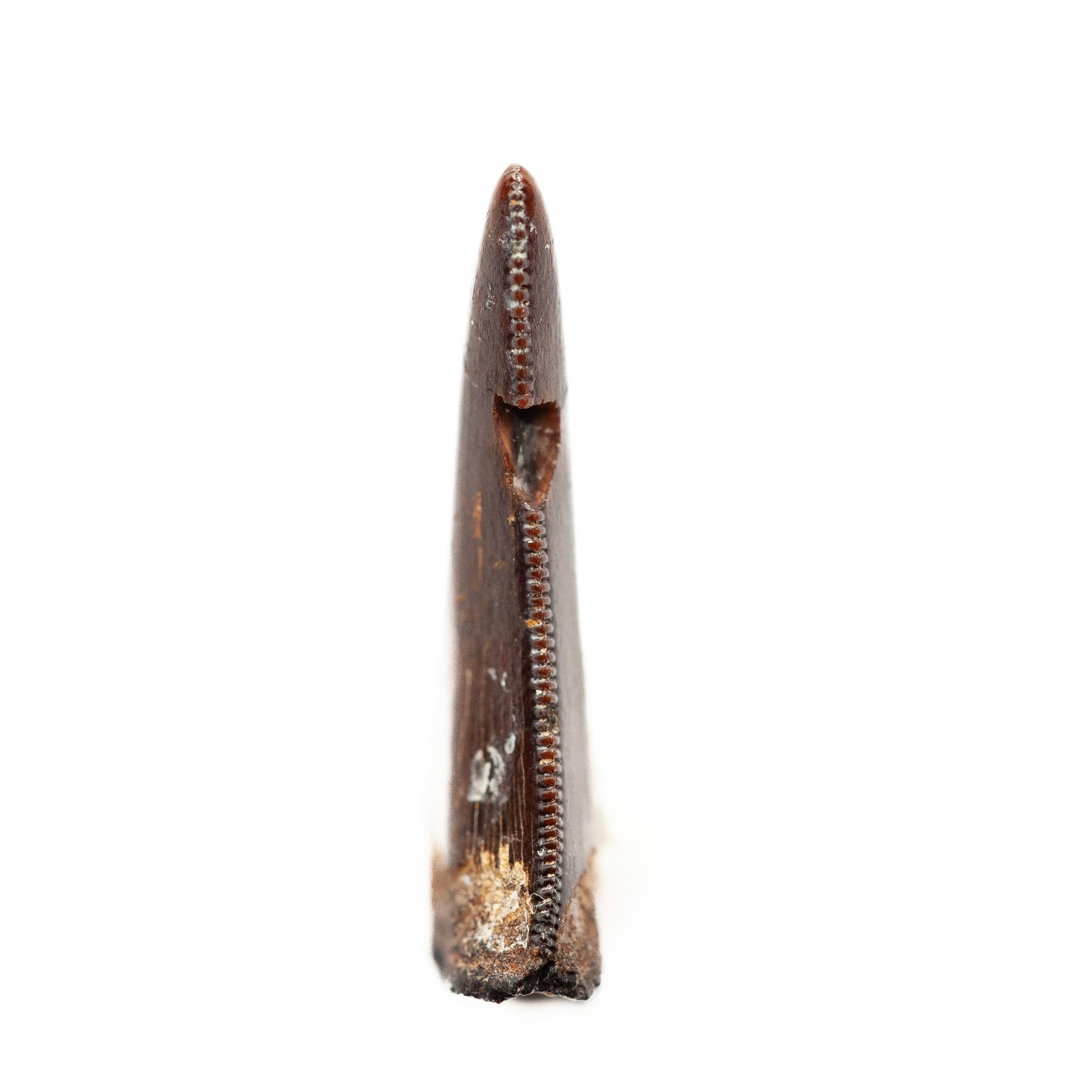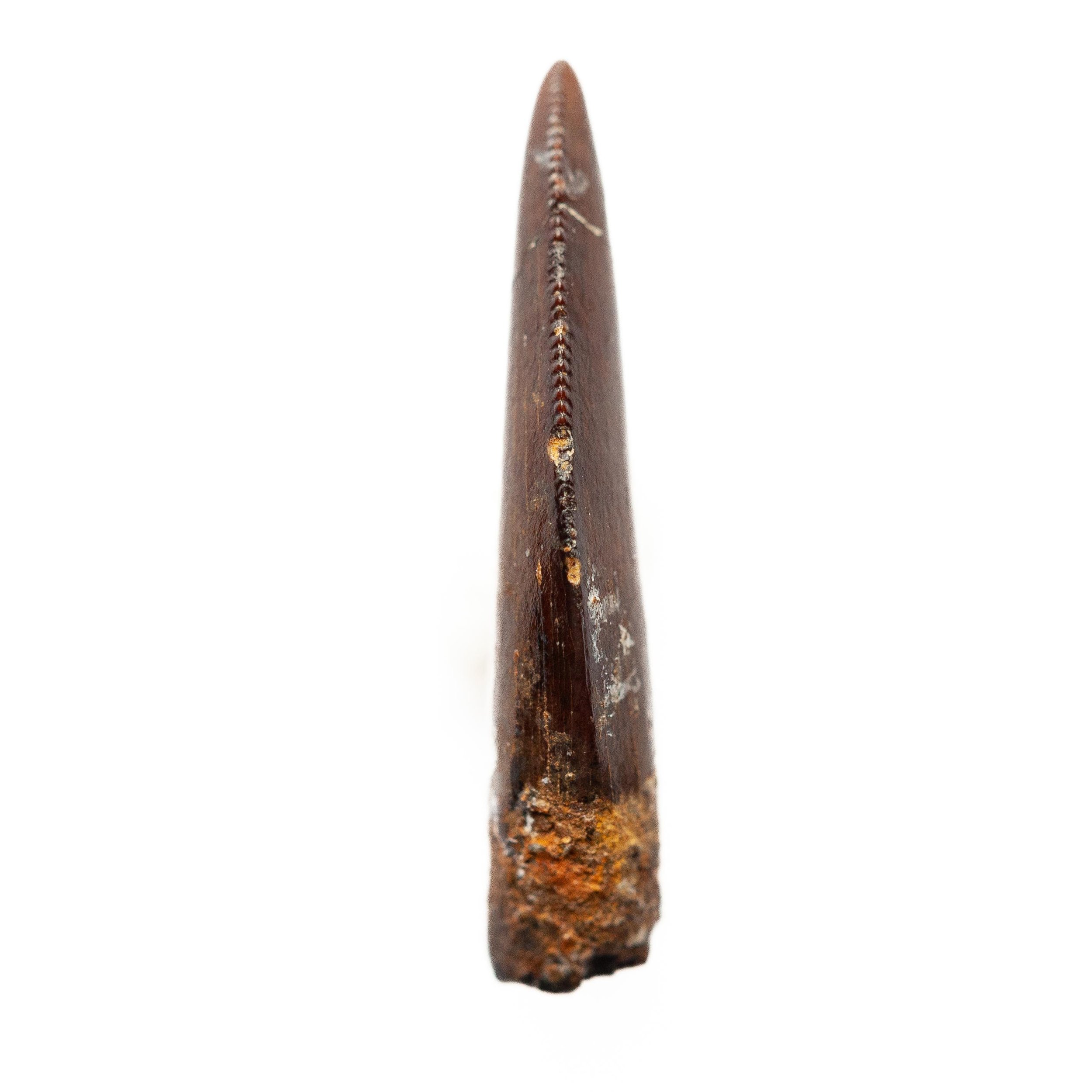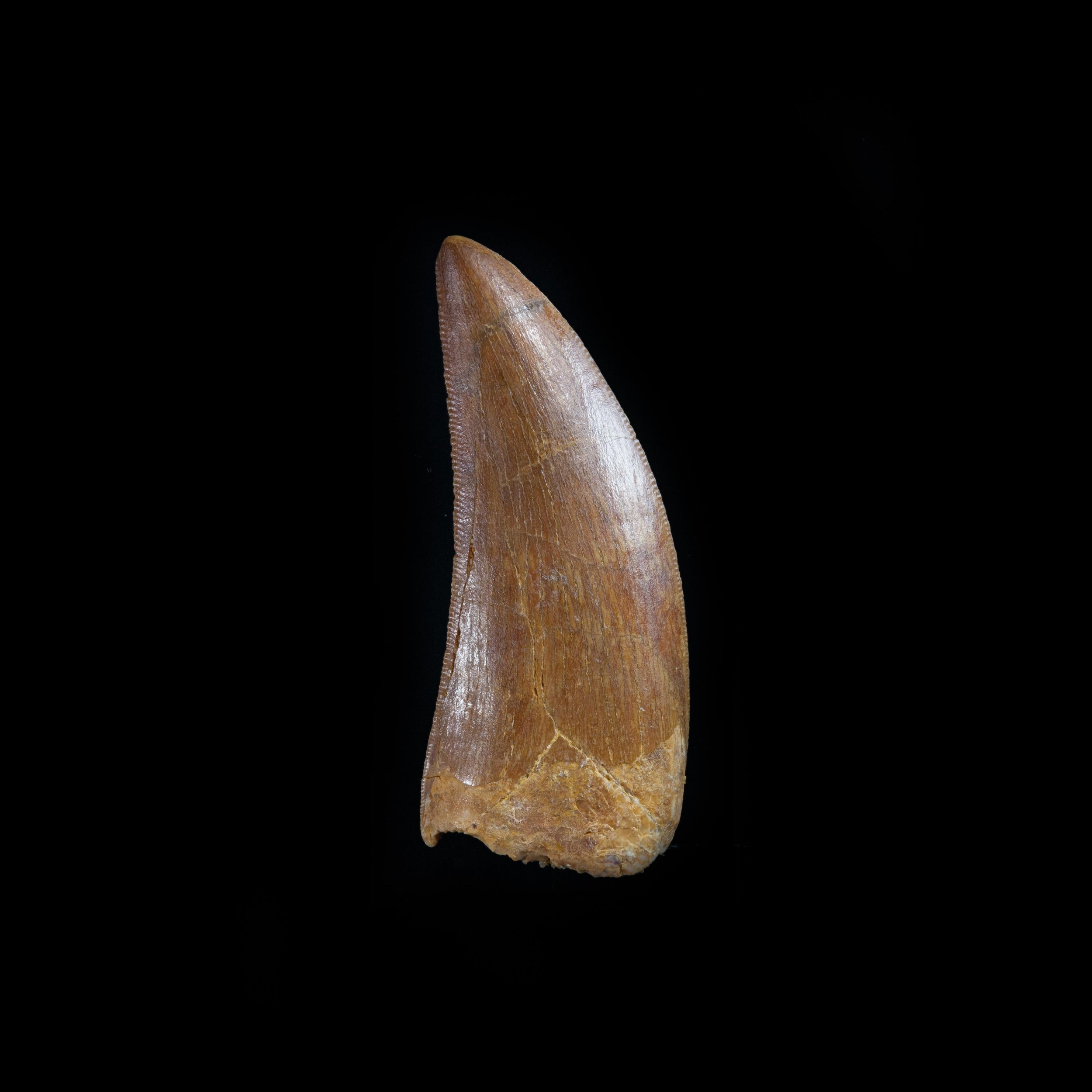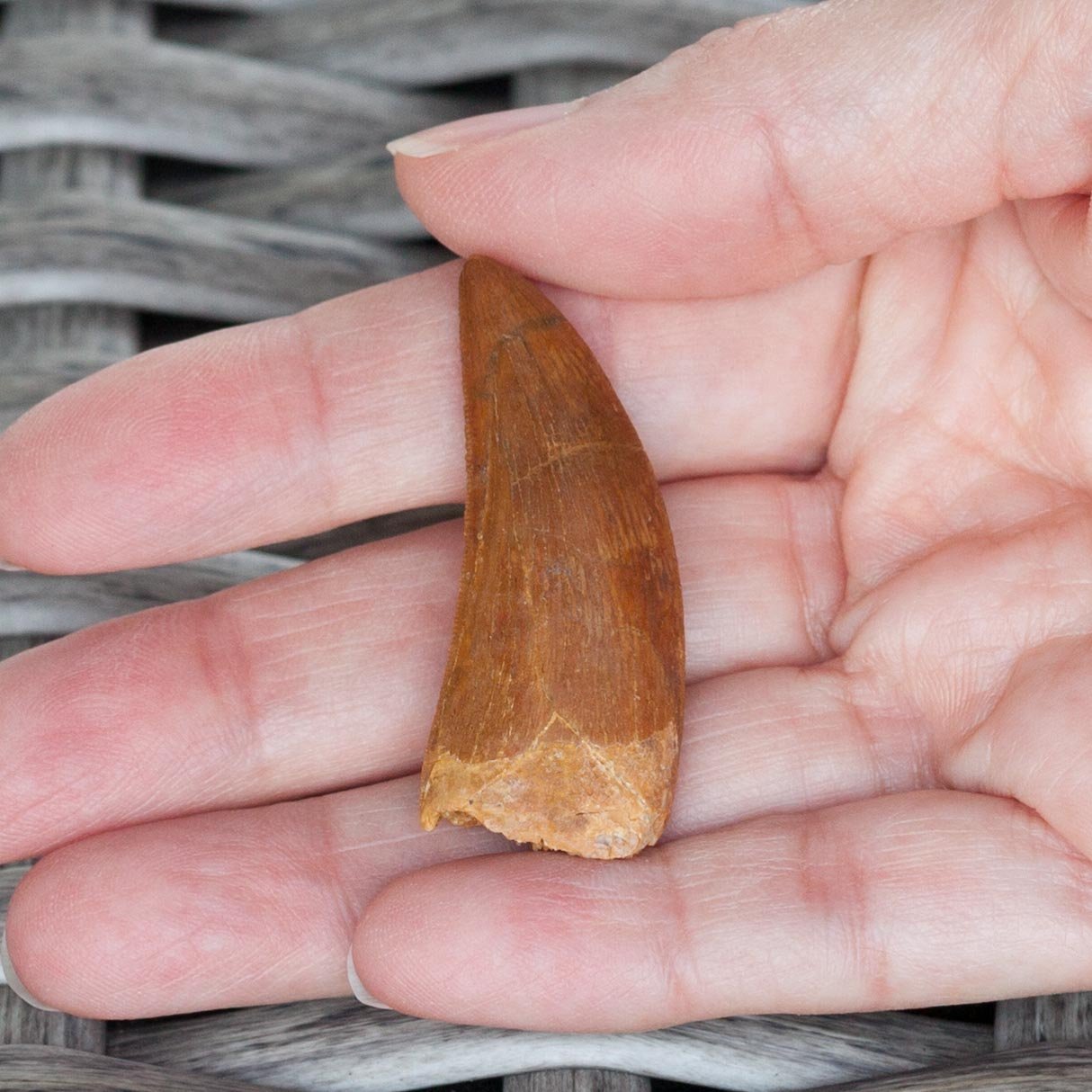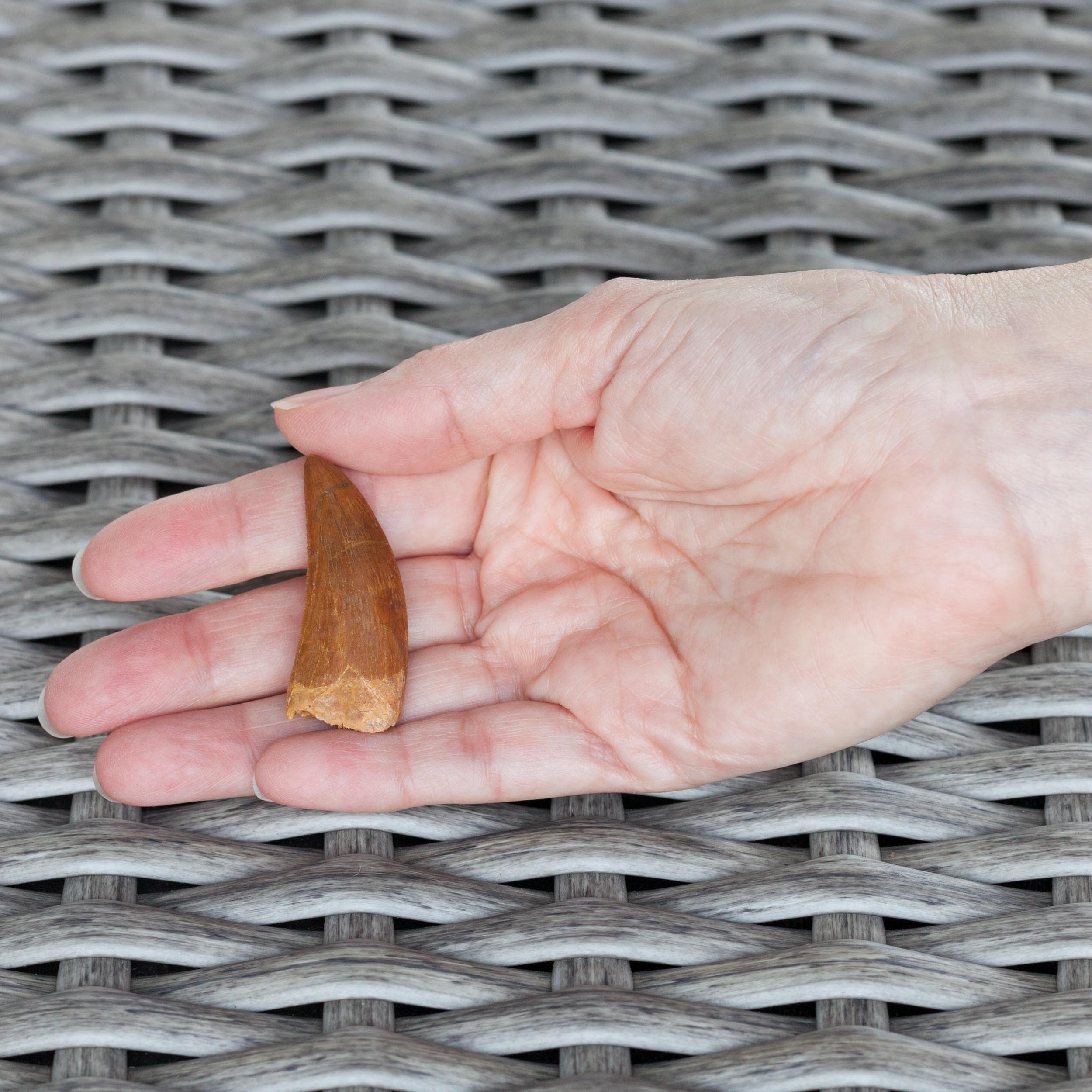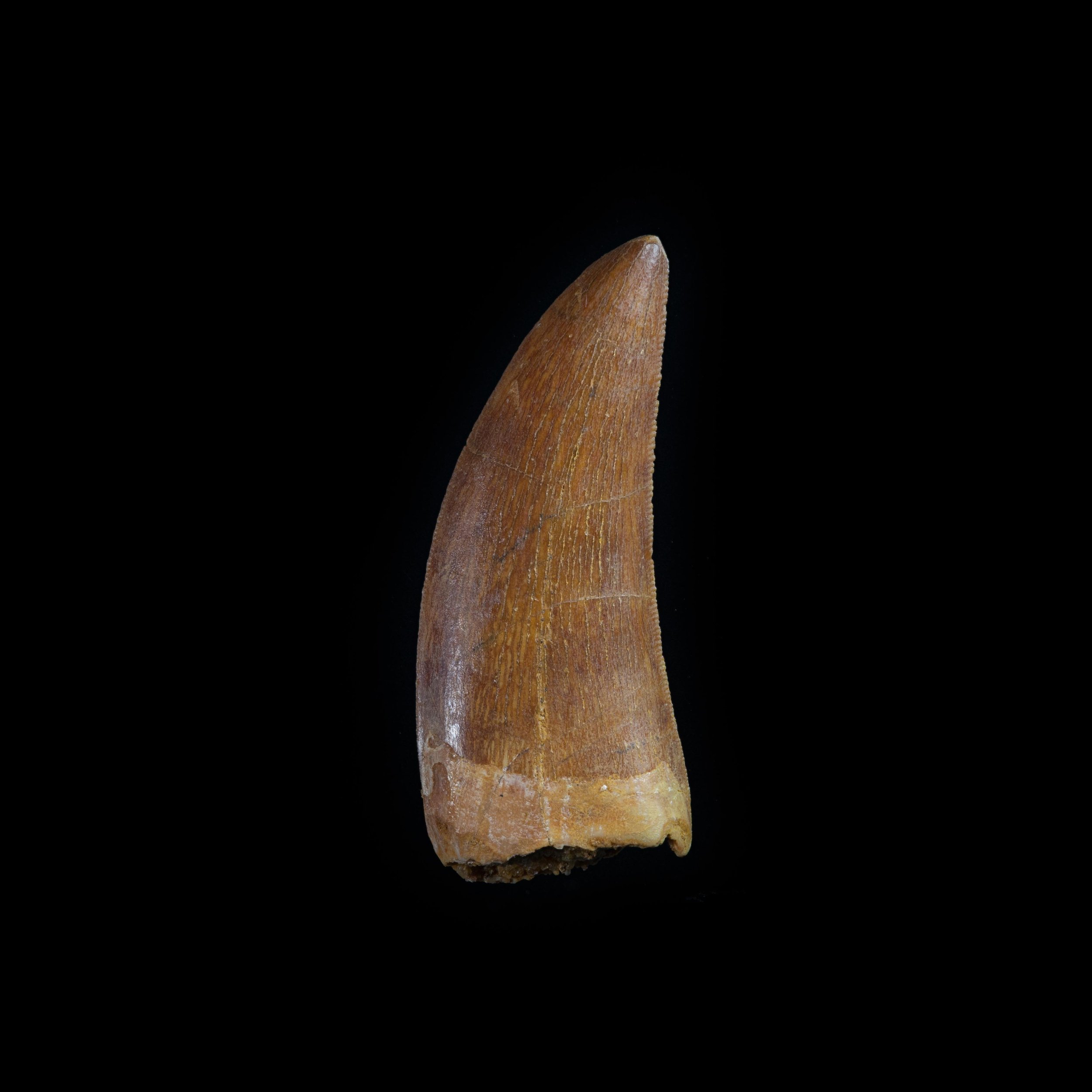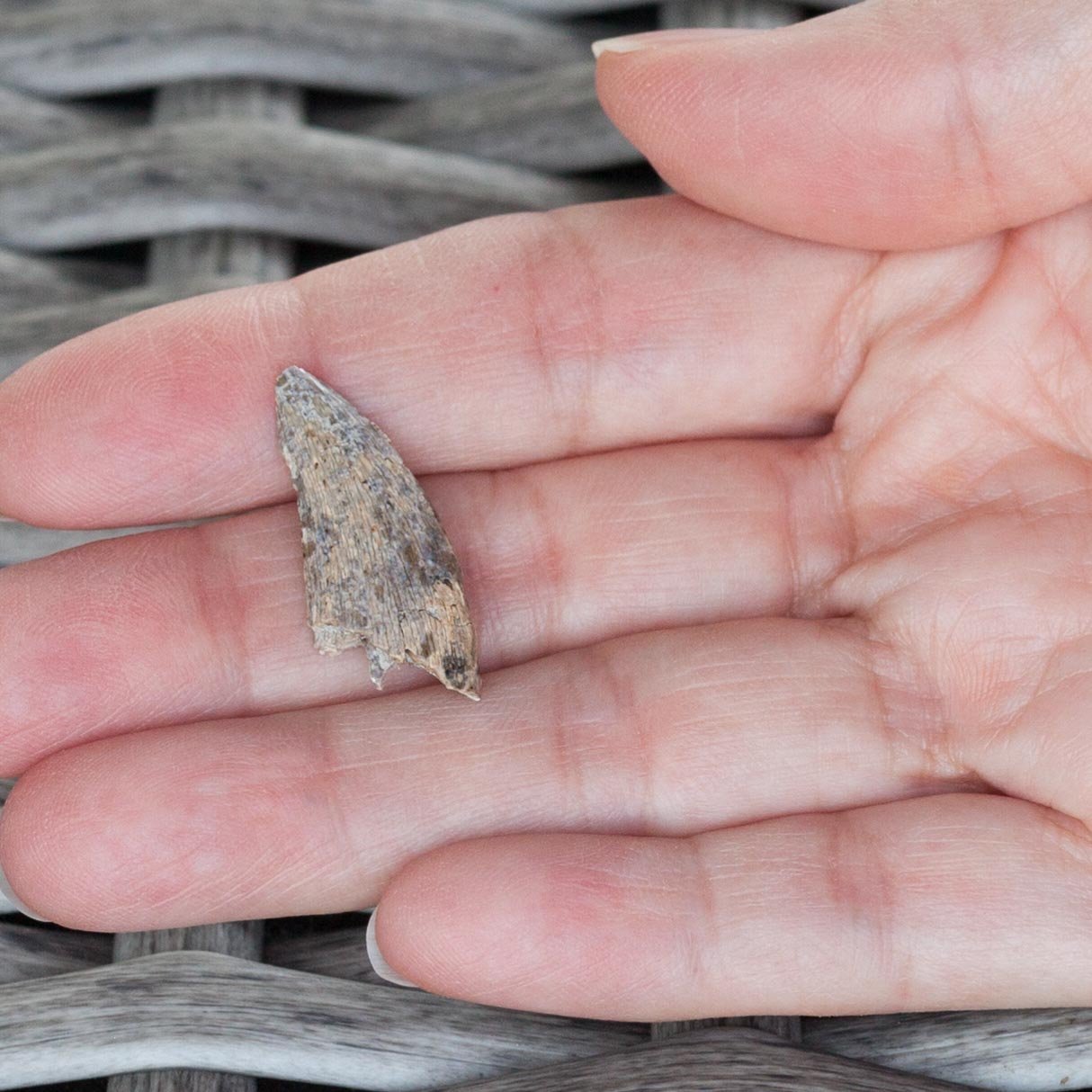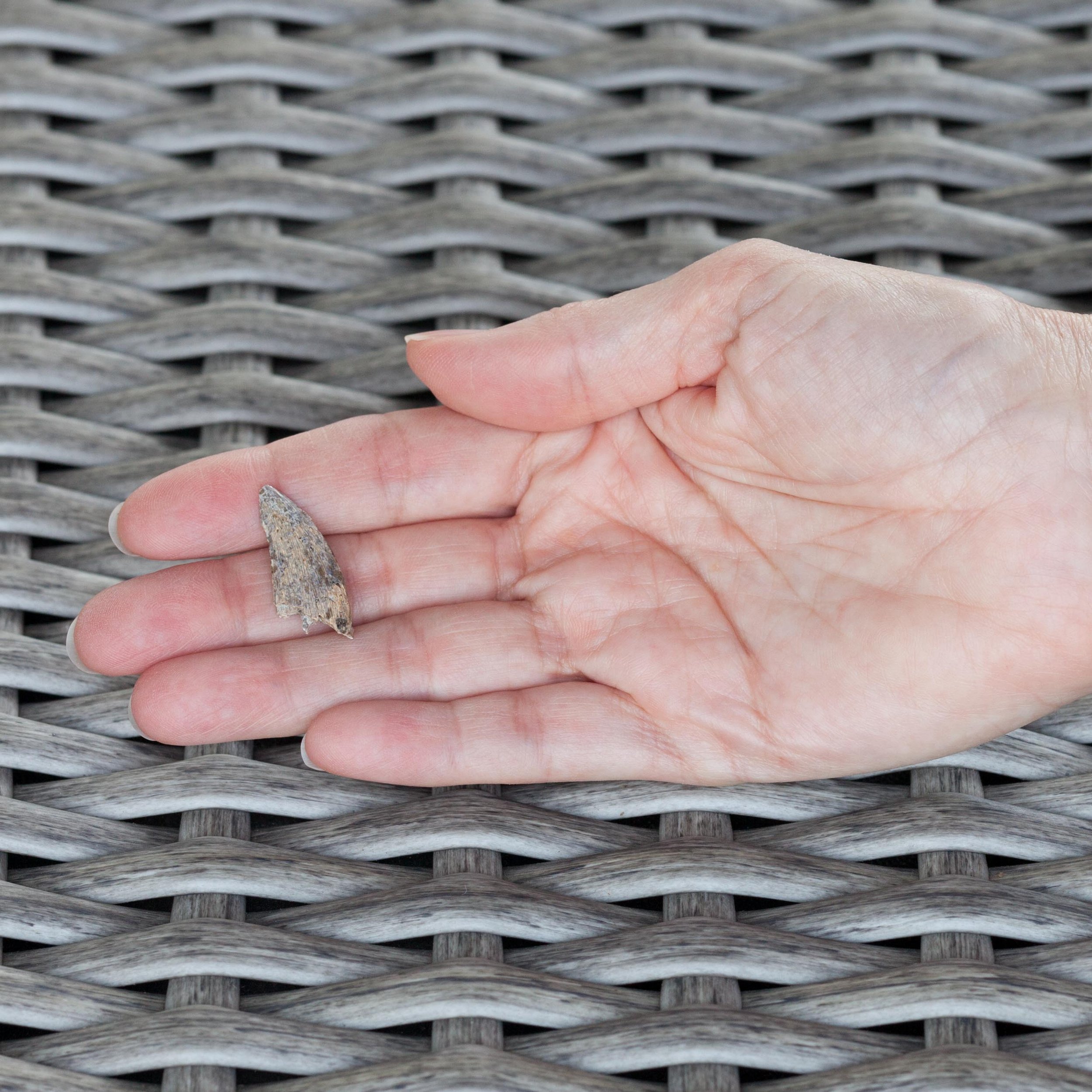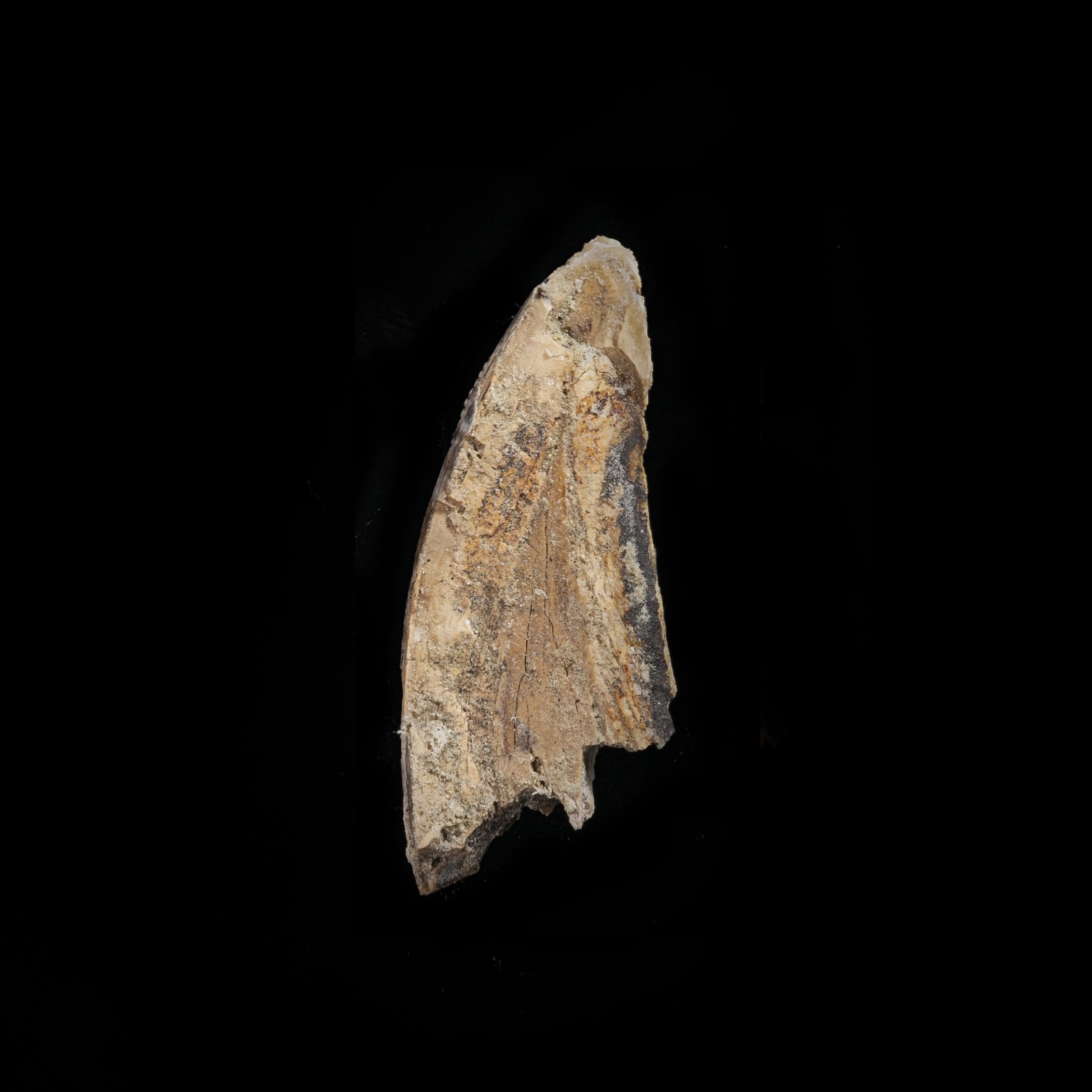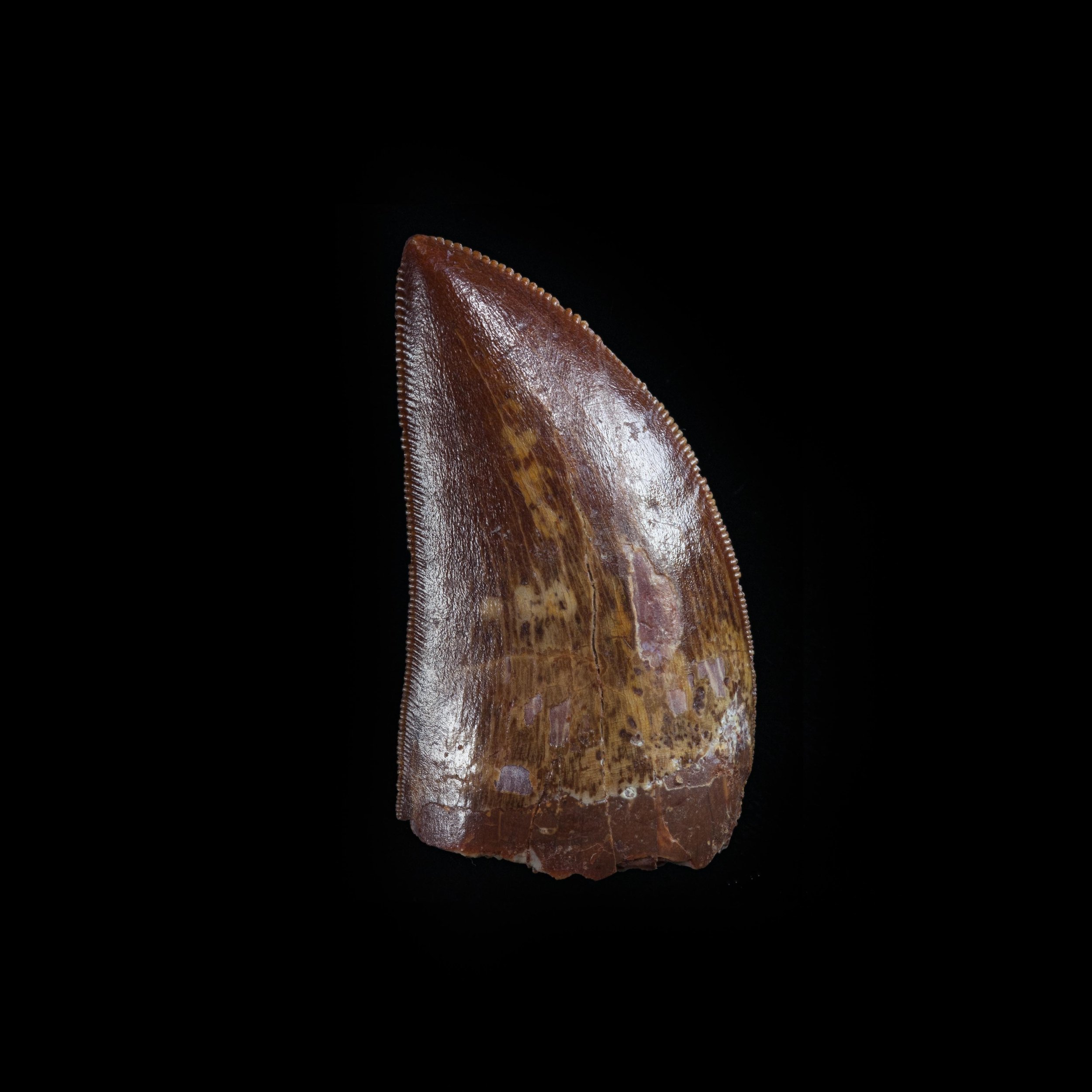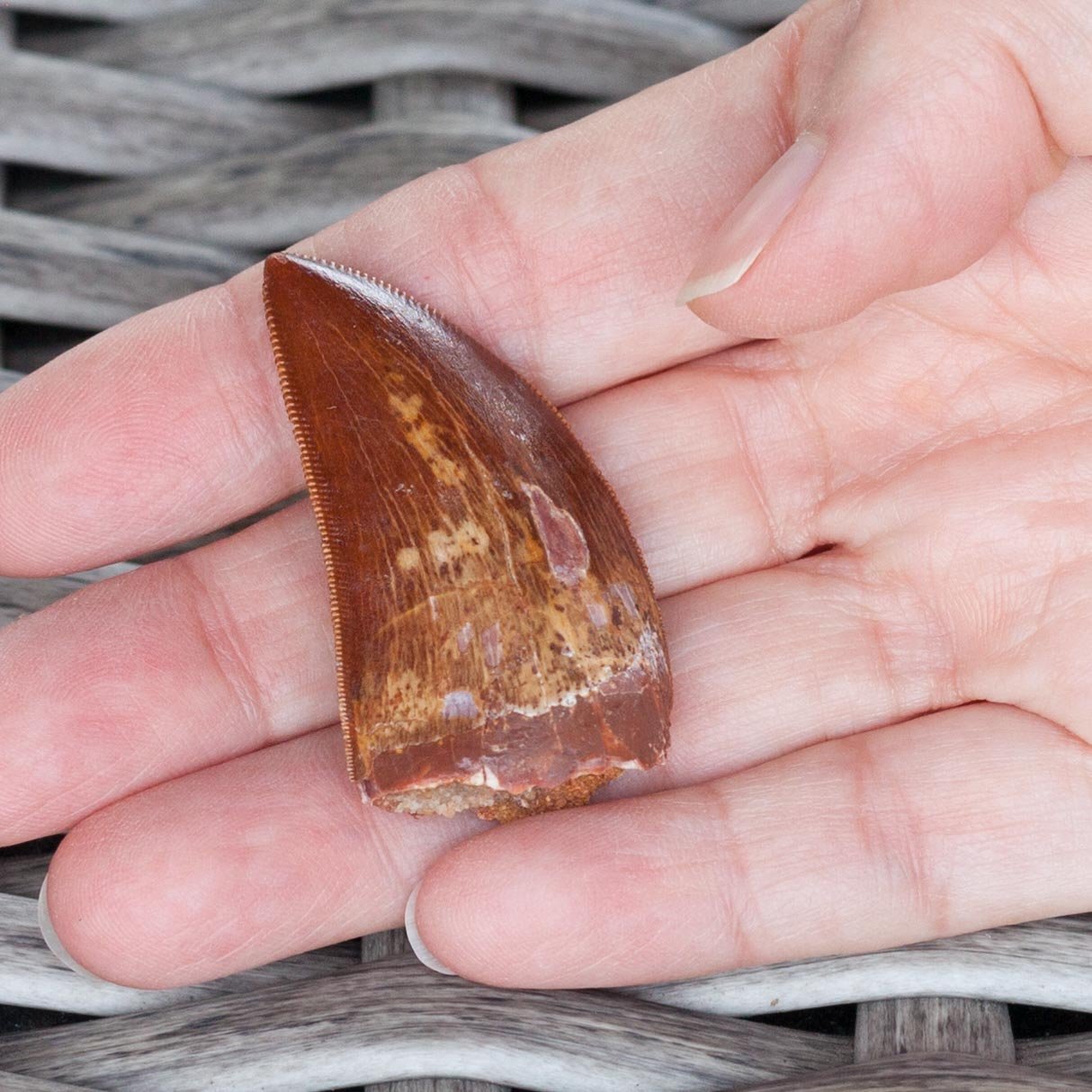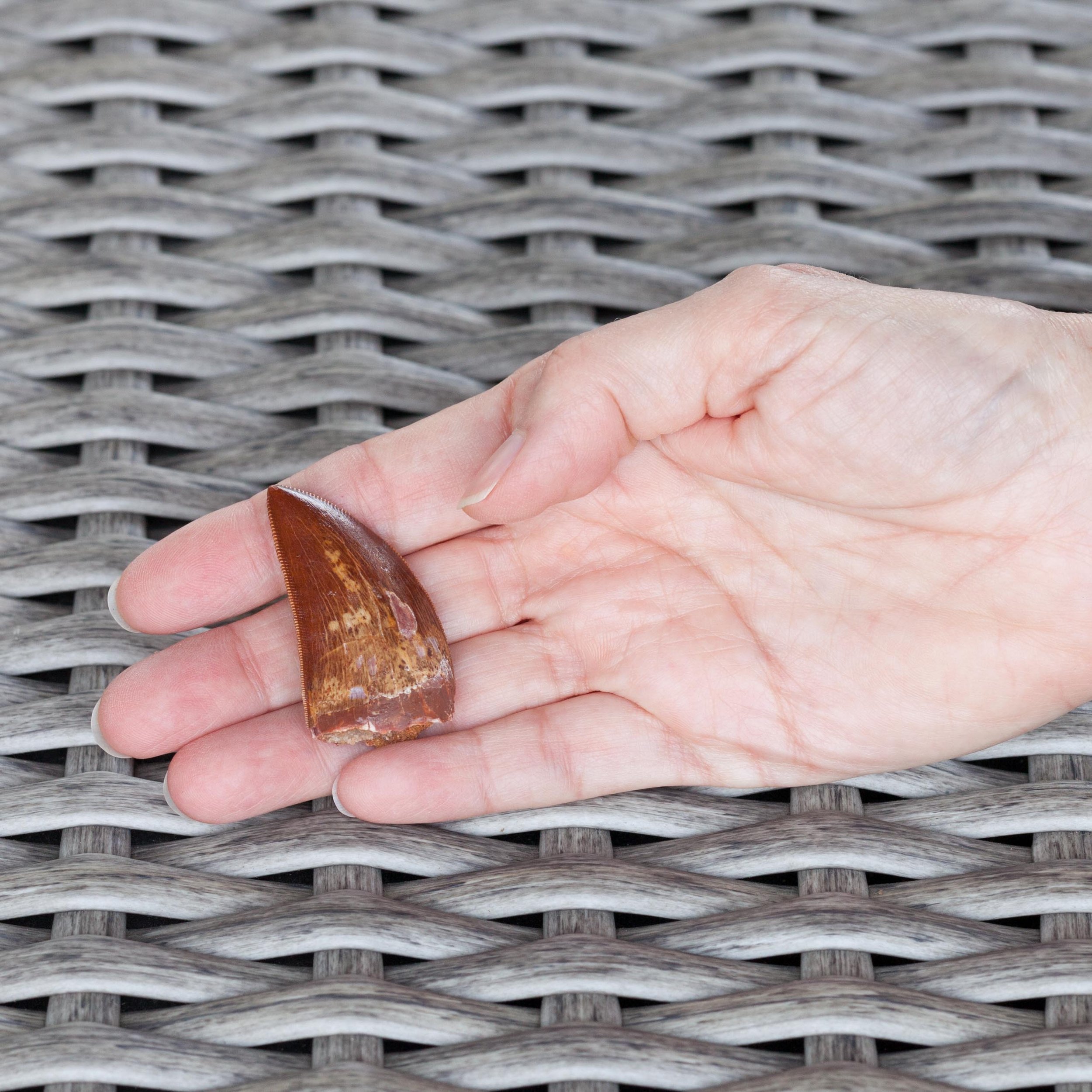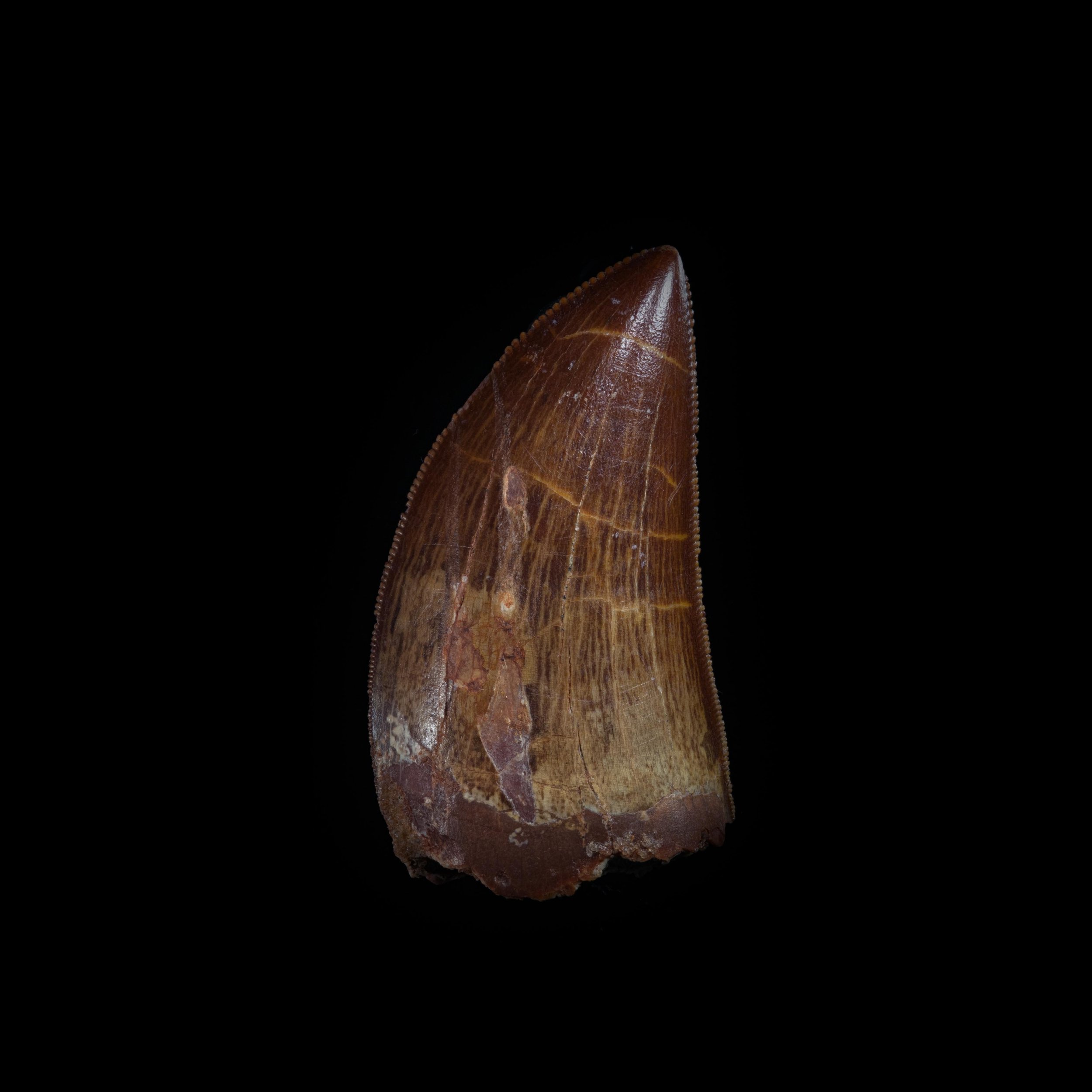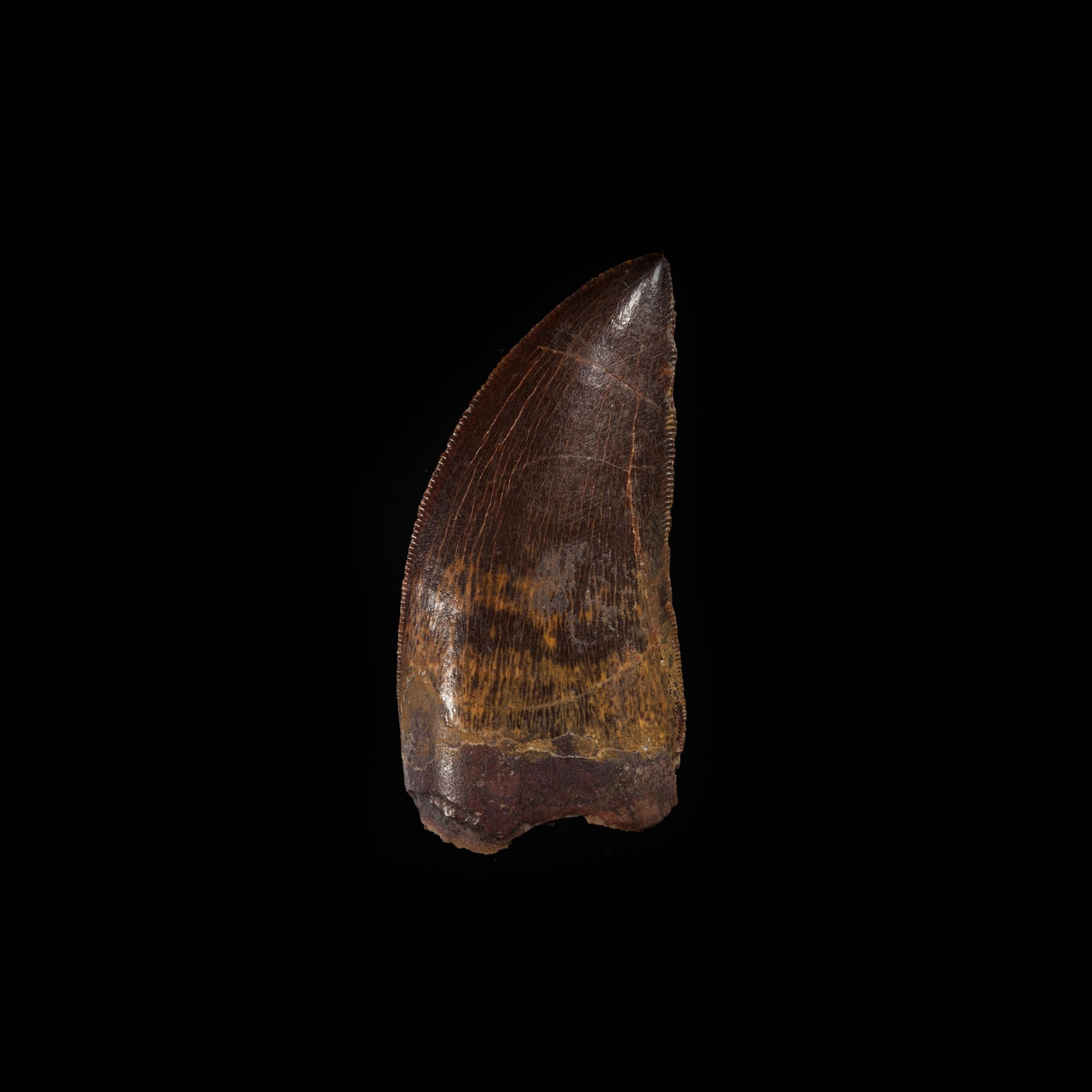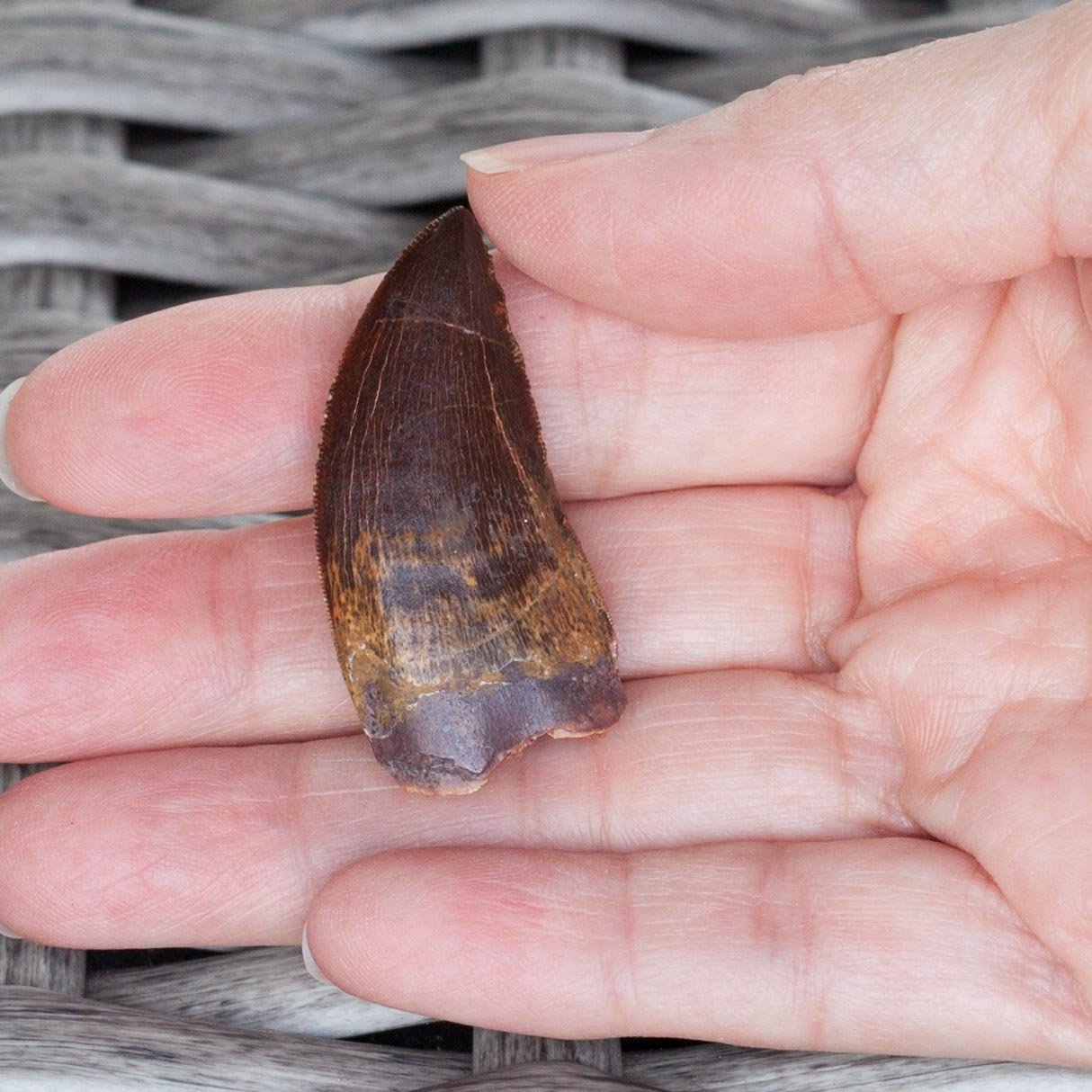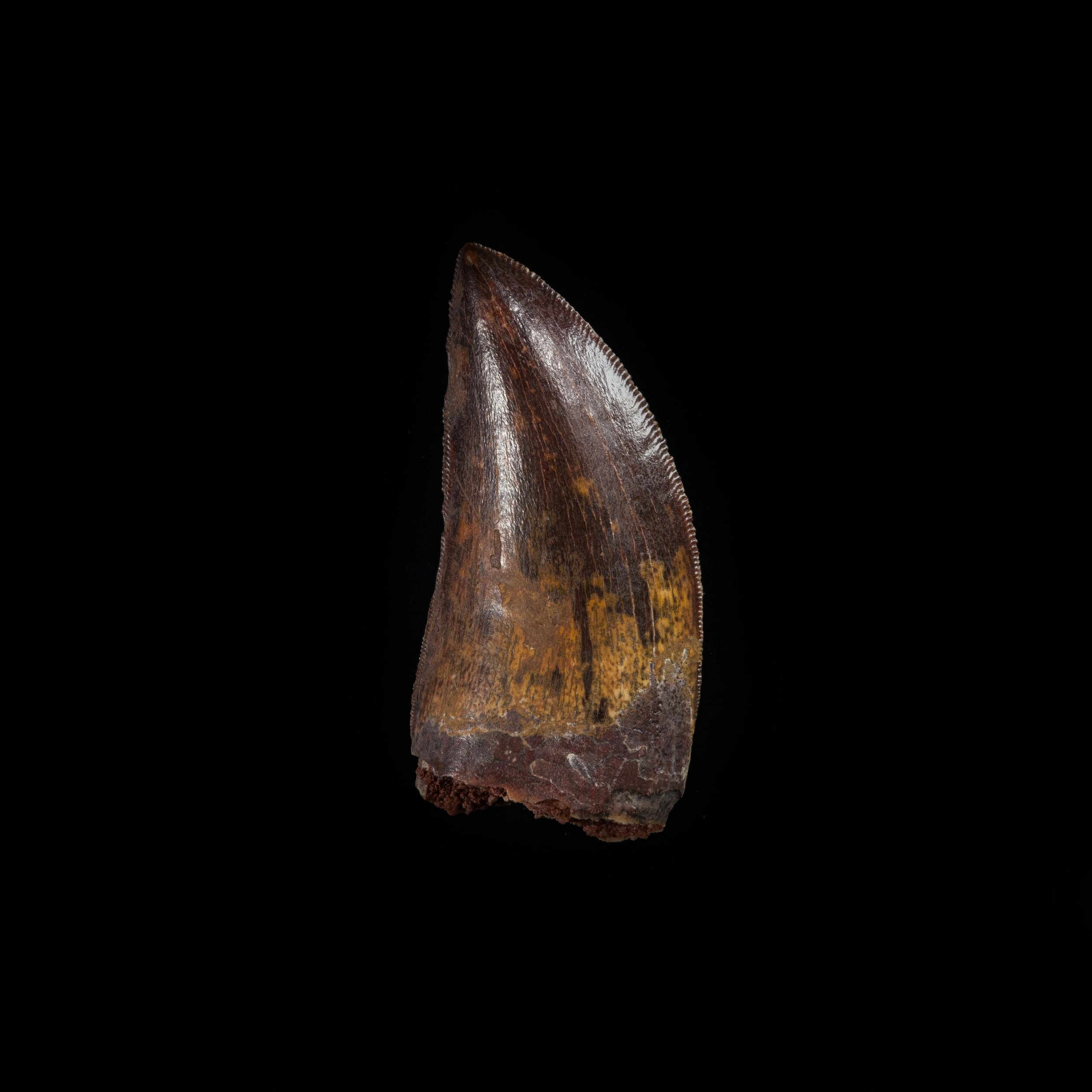Suchomimus tenerensis
Vendor: Fossil Soup
SKU Number: SQ7867851
Suchomimus is a spinosaurid dinosaur from the late Cretaceous of Africa that fits somewhere between Baryonyx and Spinosaurus in size. It had a crocodile-like skull suited to a semi-aquatic existance, feeding on fish as well as terrestrail prey.
This is a nice tooth with some wear to the enamal, although the carinae on the edges of the tooth still display some of the denticles. There does not appear to have been any repair or restoration to the tooth. The crown appears to be complete, though it does show some signs of wear.
It should be noted that it is very difficult to determine tooth position based on the inspection of isolated examples. Therefore we use certain morphological features to suggest general location. A morphological diagram is provided further down the page.
Full dimensions are listed below.
Vendor: Fossil Soup
SKU Number: SQ7867851
Suchomimus is a spinosaurid dinosaur from the late Cretaceous of Africa that fits somewhere between Baryonyx and Spinosaurus in size. It had a crocodile-like skull suited to a semi-aquatic existance, feeding on fish as well as terrestrail prey.
This is a nice tooth with some wear to the enamal, although the carinae on the edges of the tooth still display some of the denticles. There does not appear to have been any repair or restoration to the tooth. The crown appears to be complete, though it does show some signs of wear.
It should be noted that it is very difficult to determine tooth position based on the inspection of isolated examples. Therefore we use certain morphological features to suggest general location. A morphological diagram is provided further down the page.
Full dimensions are listed below.
Vendor: Fossil Soup
SKU Number: SQ7867851
Suchomimus is a spinosaurid dinosaur from the late Cretaceous of Africa that fits somewhere between Baryonyx and Spinosaurus in size. It had a crocodile-like skull suited to a semi-aquatic existance, feeding on fish as well as terrestrail prey.
This is a nice tooth with some wear to the enamal, although the carinae on the edges of the tooth still display some of the denticles. There does not appear to have been any repair or restoration to the tooth. The crown appears to be complete, though it does show some signs of wear.
It should be noted that it is very difficult to determine tooth position based on the inspection of isolated examples. Therefore we use certain morphological features to suggest general location. A morphological diagram is provided further down the page.
Full dimensions are listed below.
Additional Information
Formed around 300 million years ago, the break-up of Pangaea about 180 million years ago gave rise to 2 new large masses, Gondwana and Laurasia. This was during the age of reptiles (including dinosaurs) and the age of ferns and cycads and conifers - the Permian and Triassic periods.
Gondwana included most of the land masses in today's southern hemisphere, including Antarctica, South America, Africa, Madagascar and Australasia, as well as the Arabian Peninsula and the Indian subcontinent, which have now moved entirely into the northern hemisphere. Laurasia contained the rest of today's northern hemisphere continents including Europe, North America and Asia.
Spinosaurus (meaning "spine lizard") is a genus of spinosaurid dinosaur that lived in what now is North Africa during the Cenomanian to upper Turonian stages of the Late Cretaceous period, about 99 to 93.5 million years ago. Spinosaurus is known to have eaten fish, and most scientists believe that it hunted both terrestrial and aquatic prey. Evidence suggests that it was highly semiaquatic, and lived both on land and in water much like modern crocodilians do.
References:


